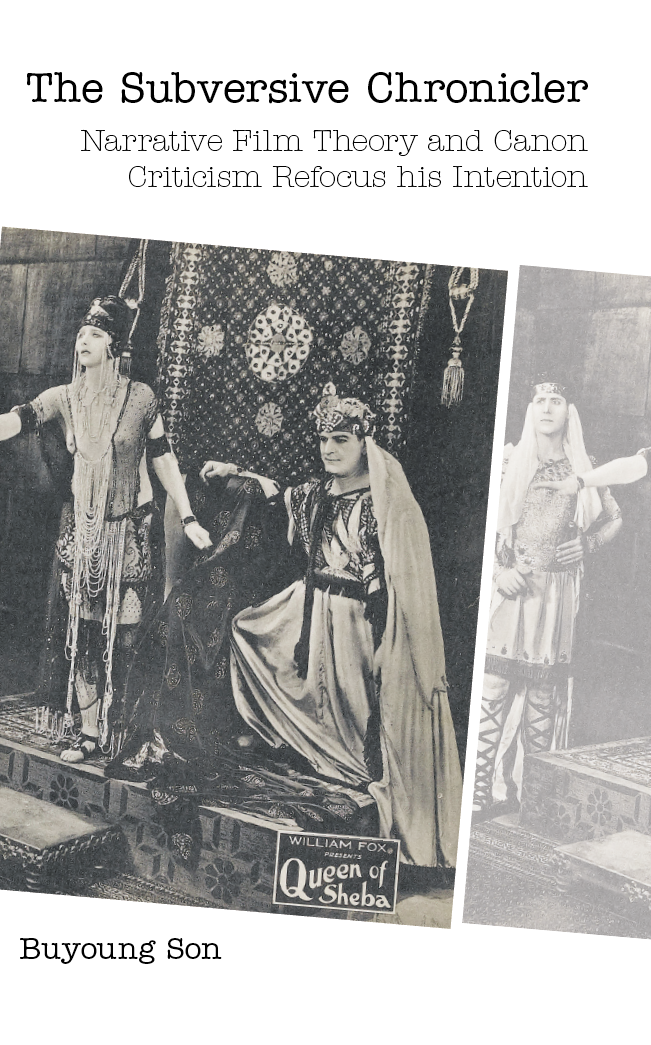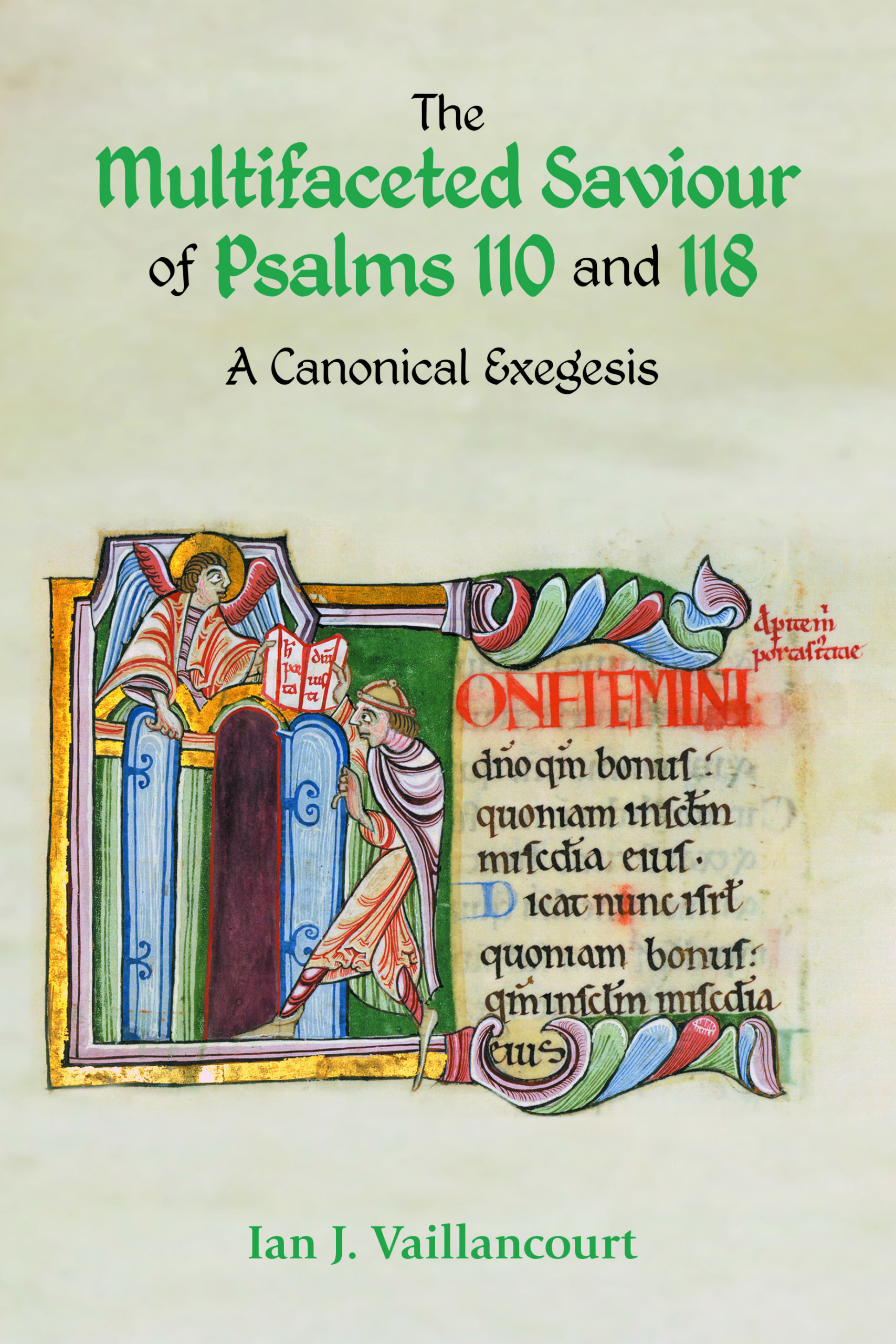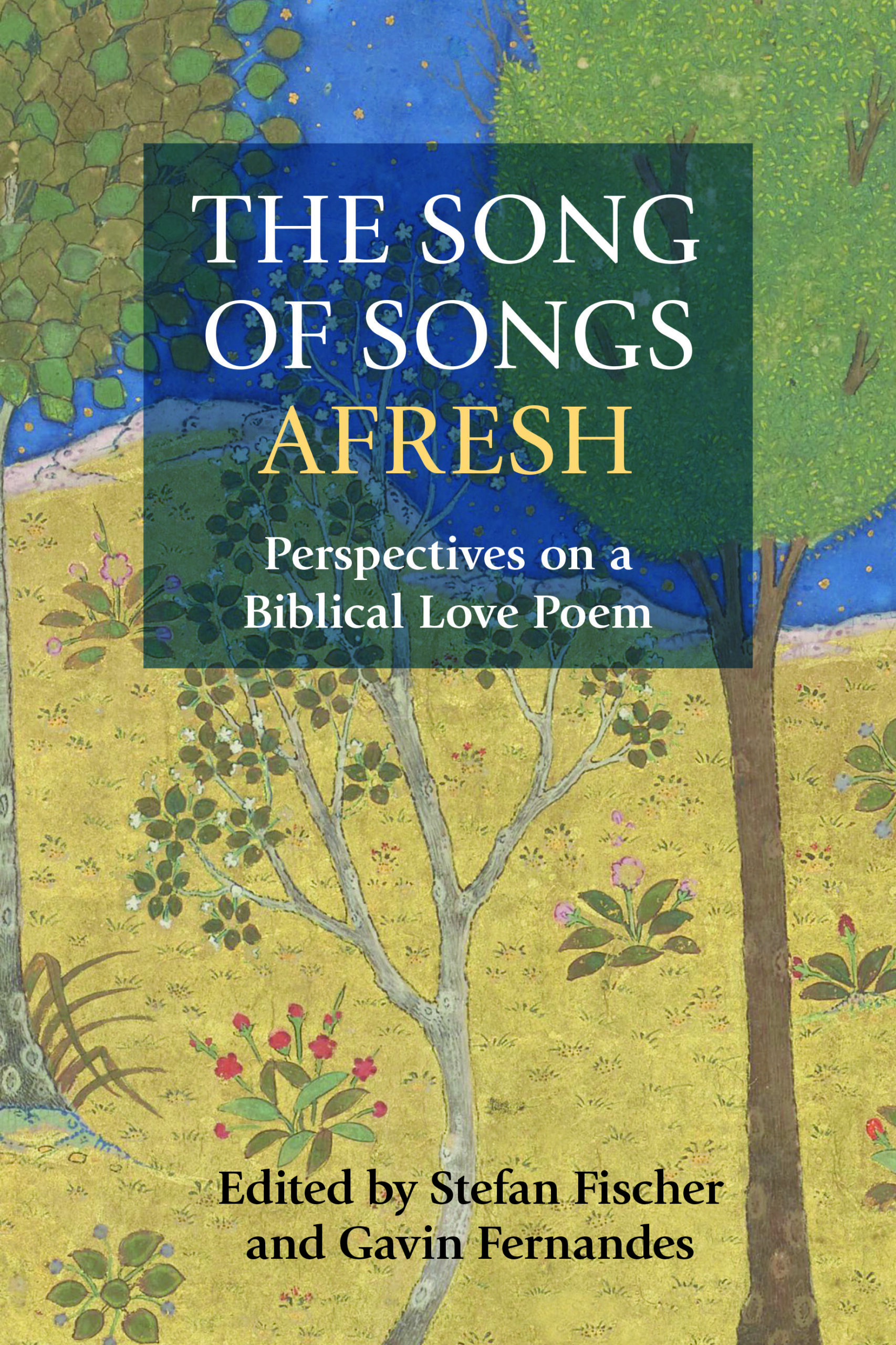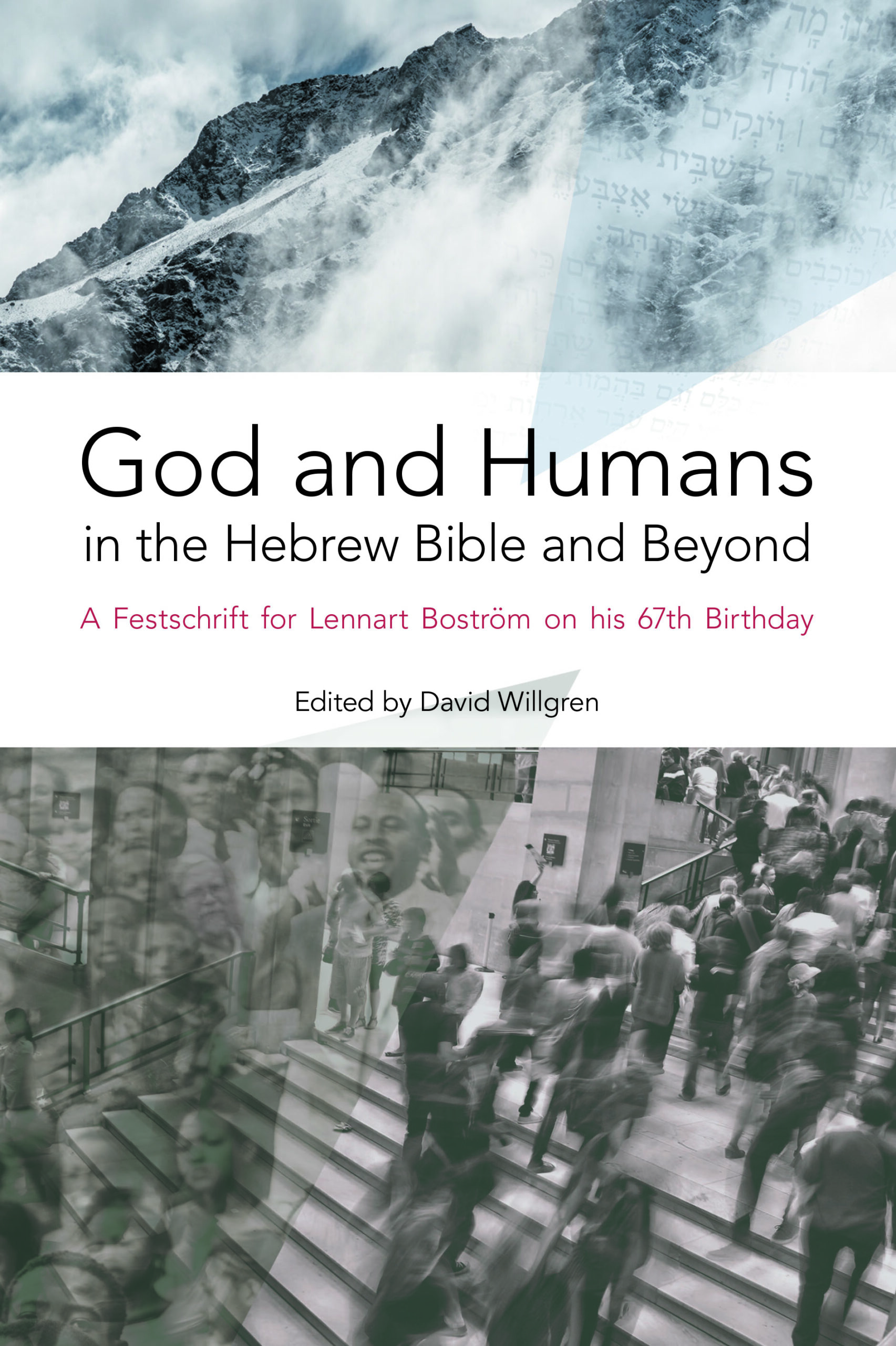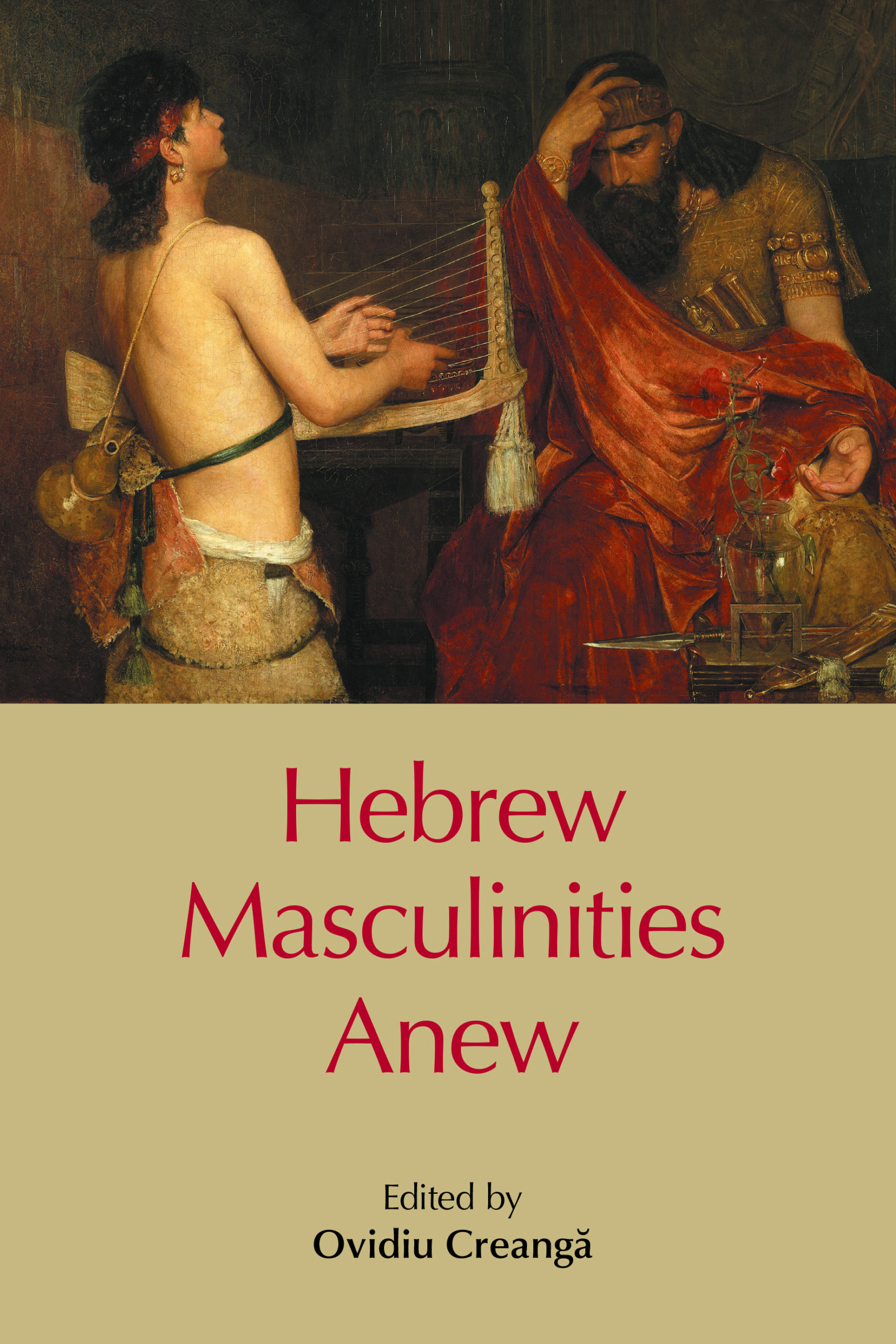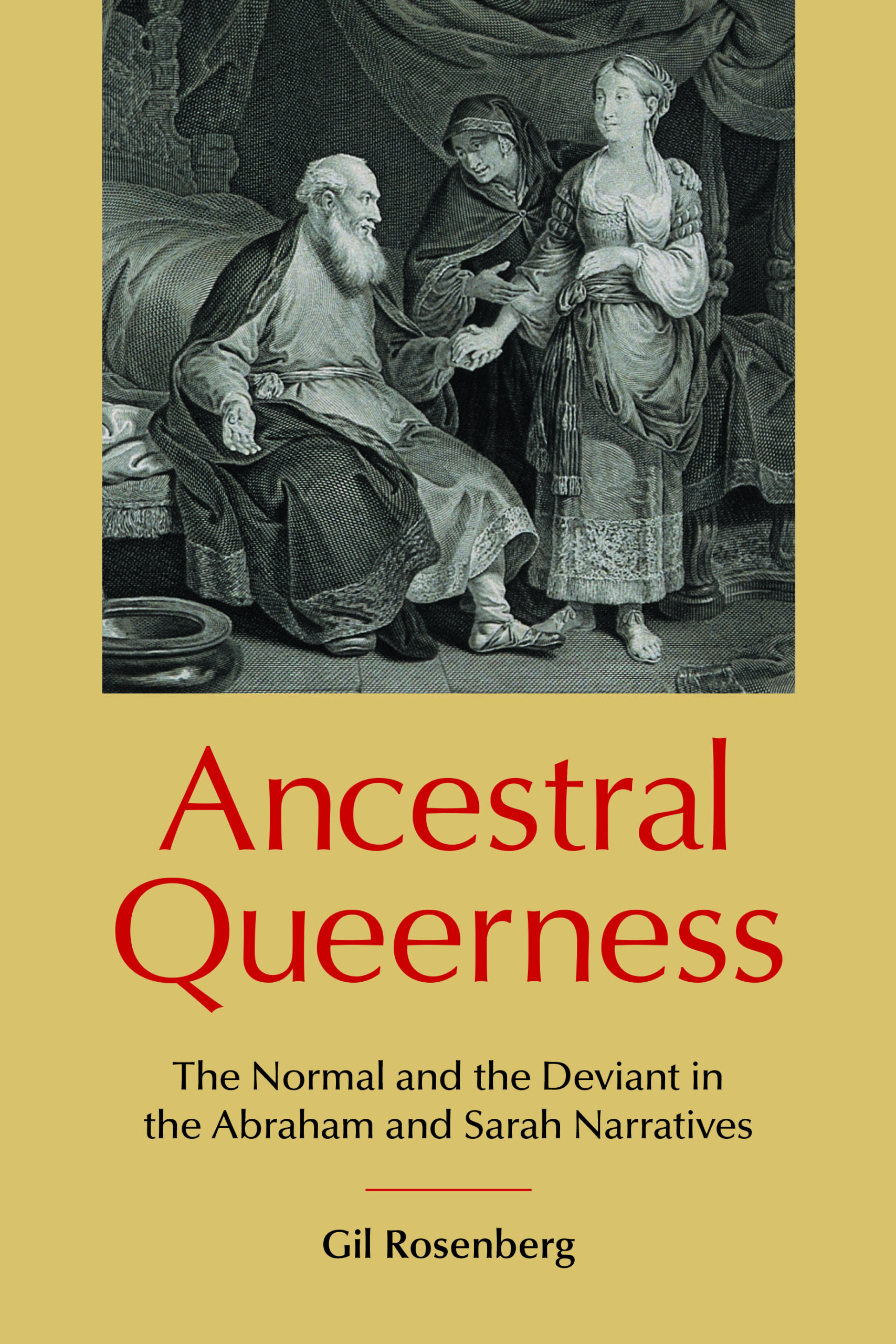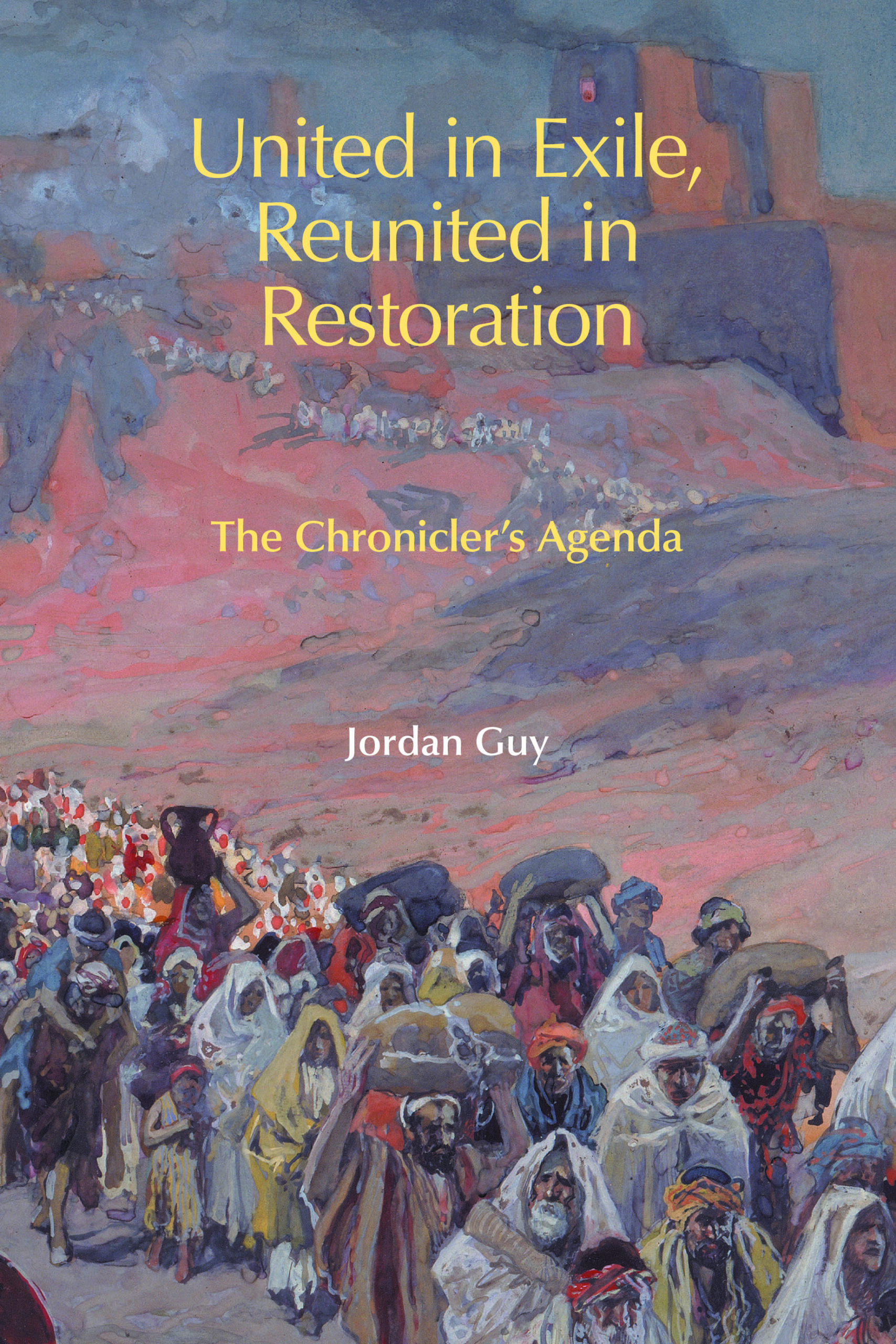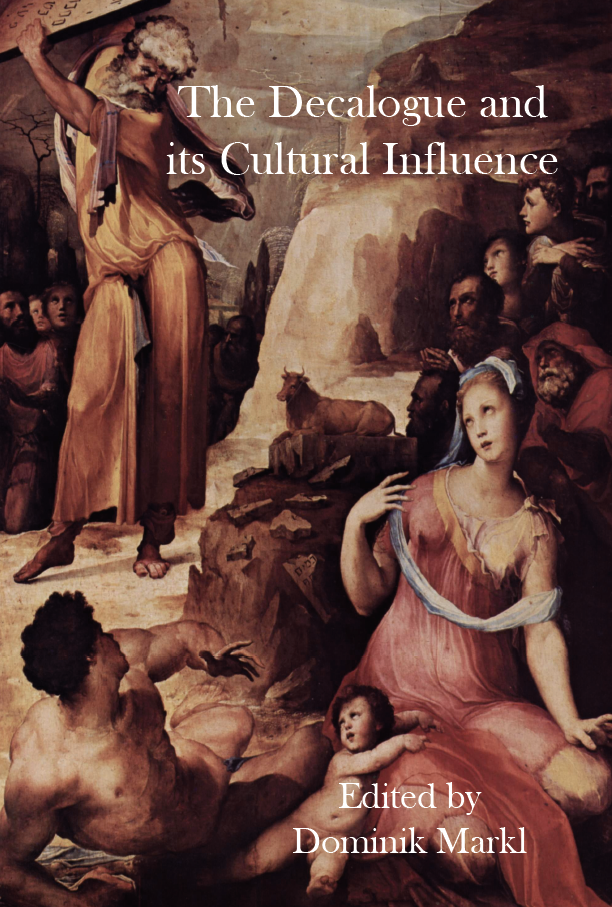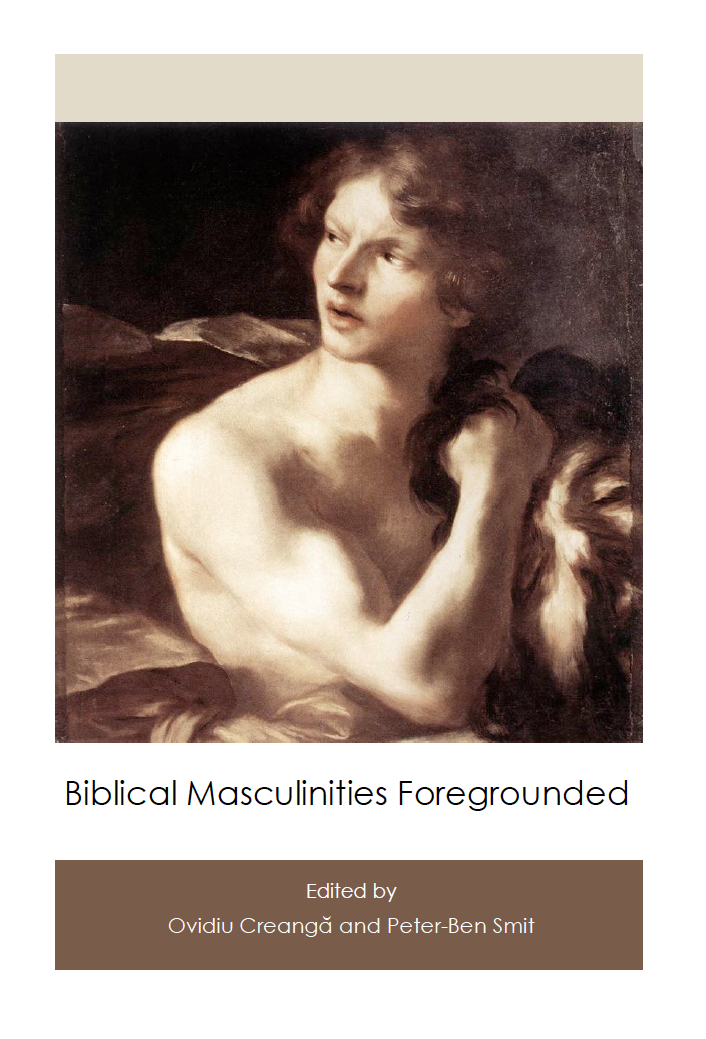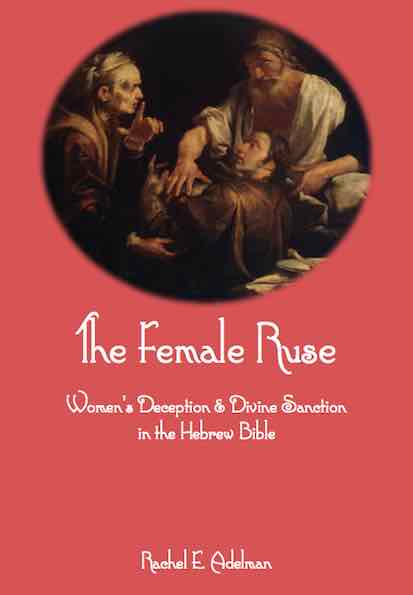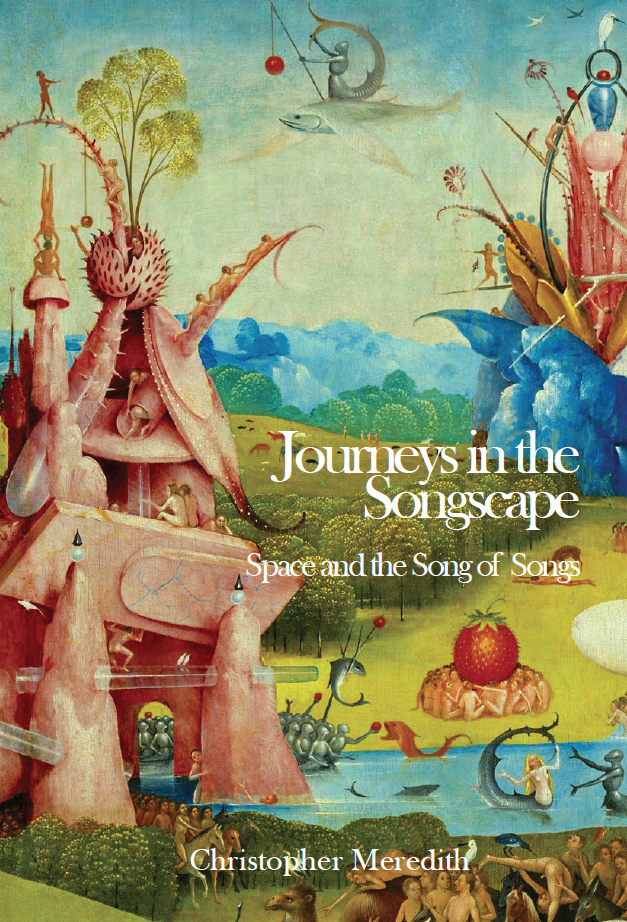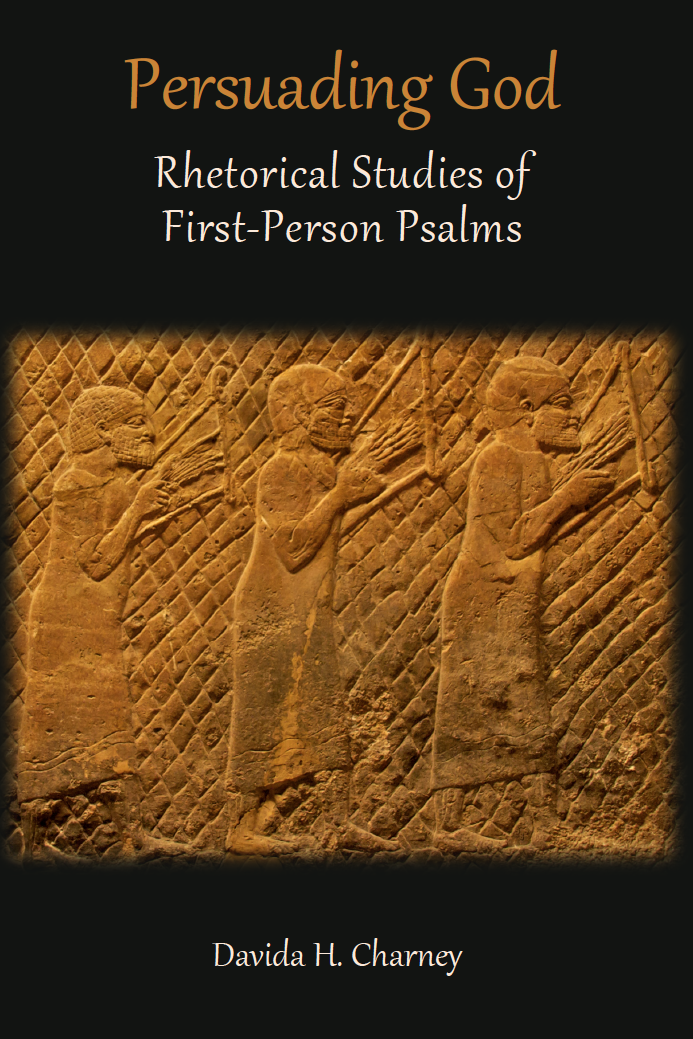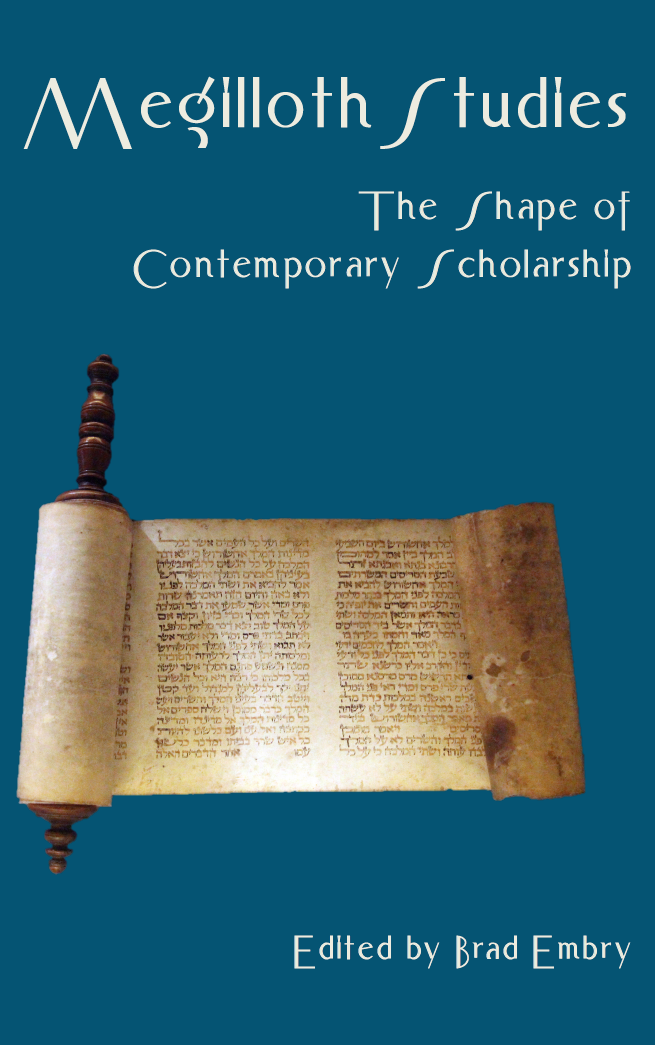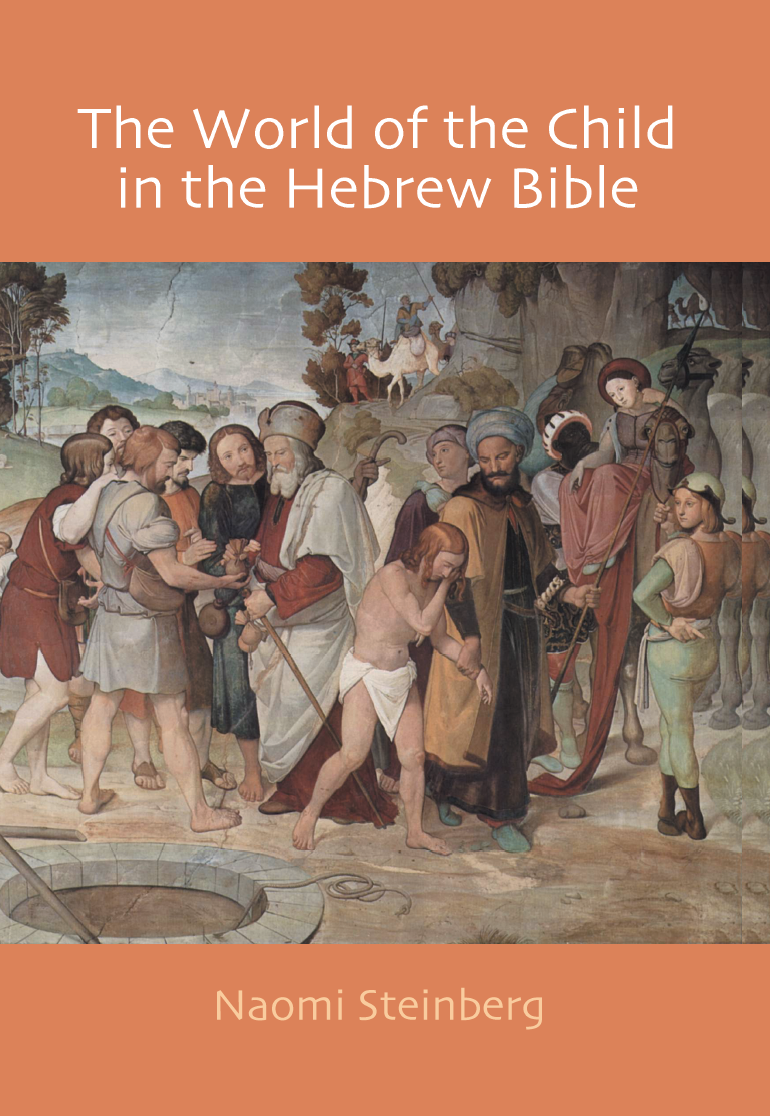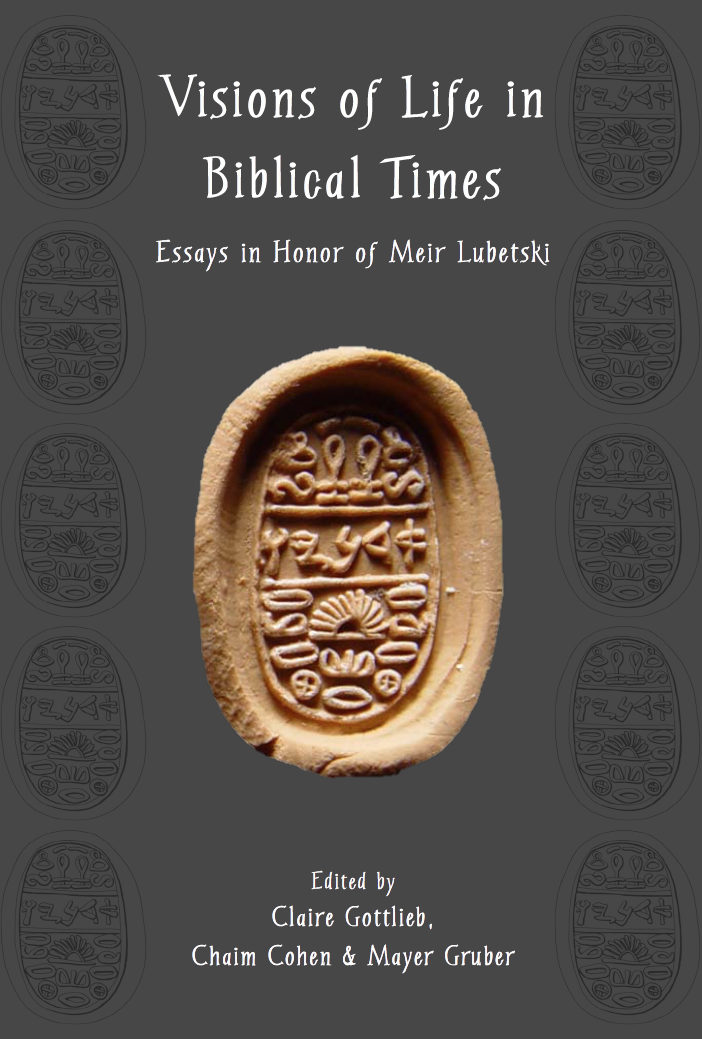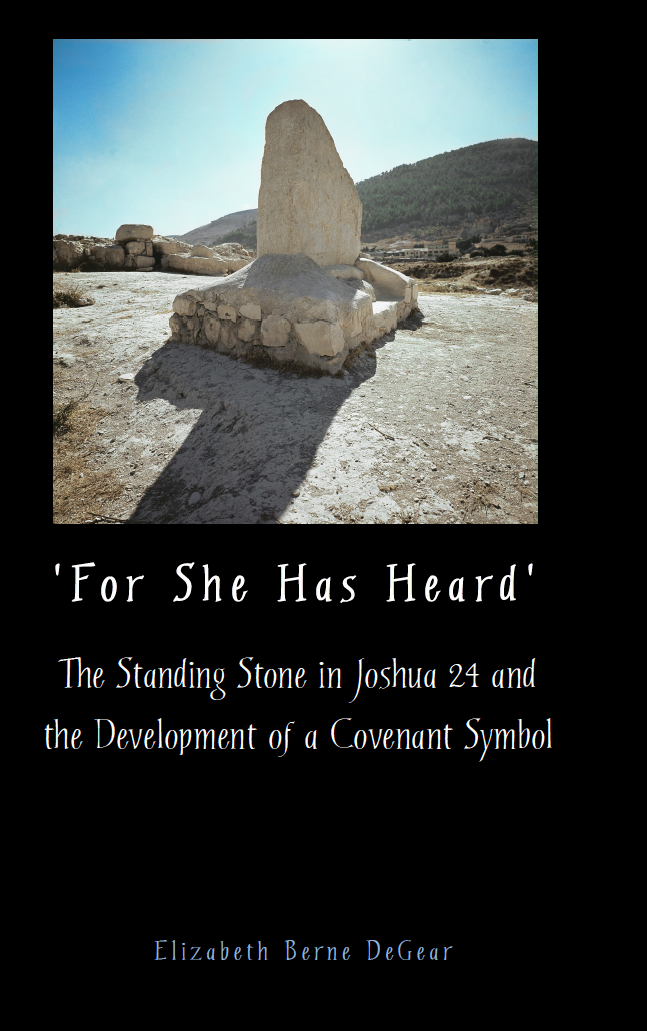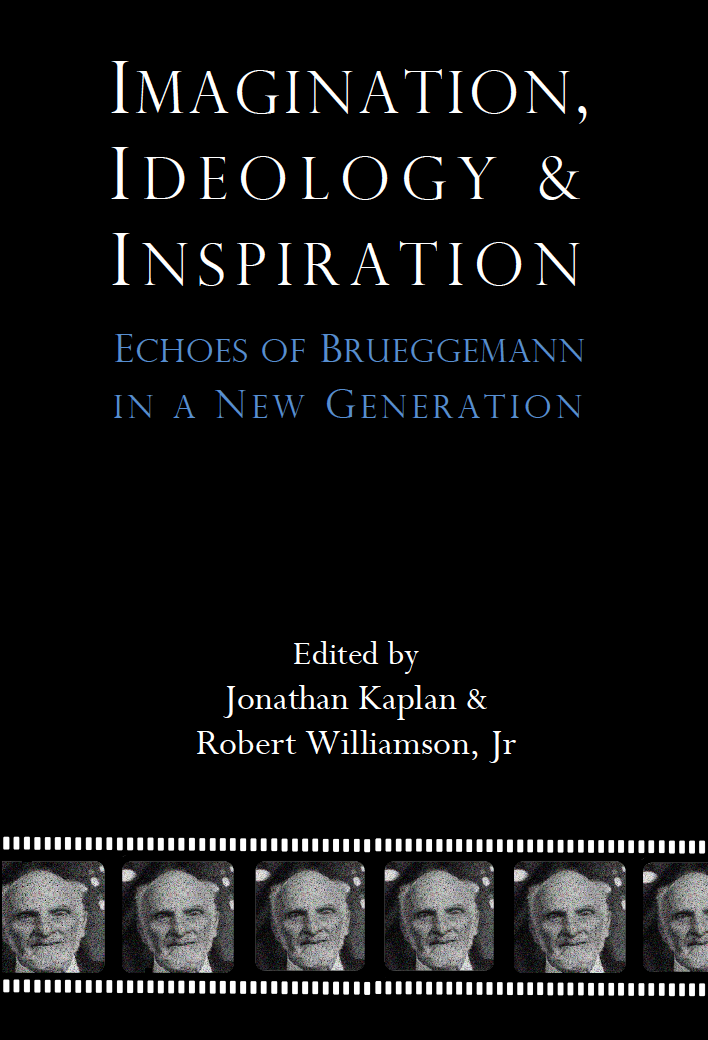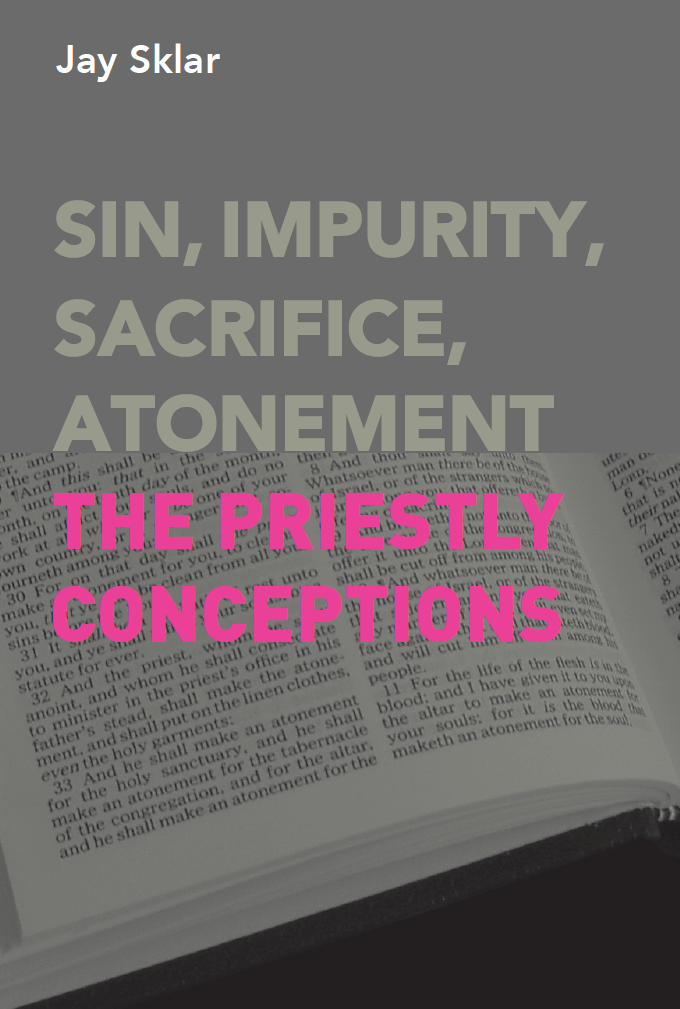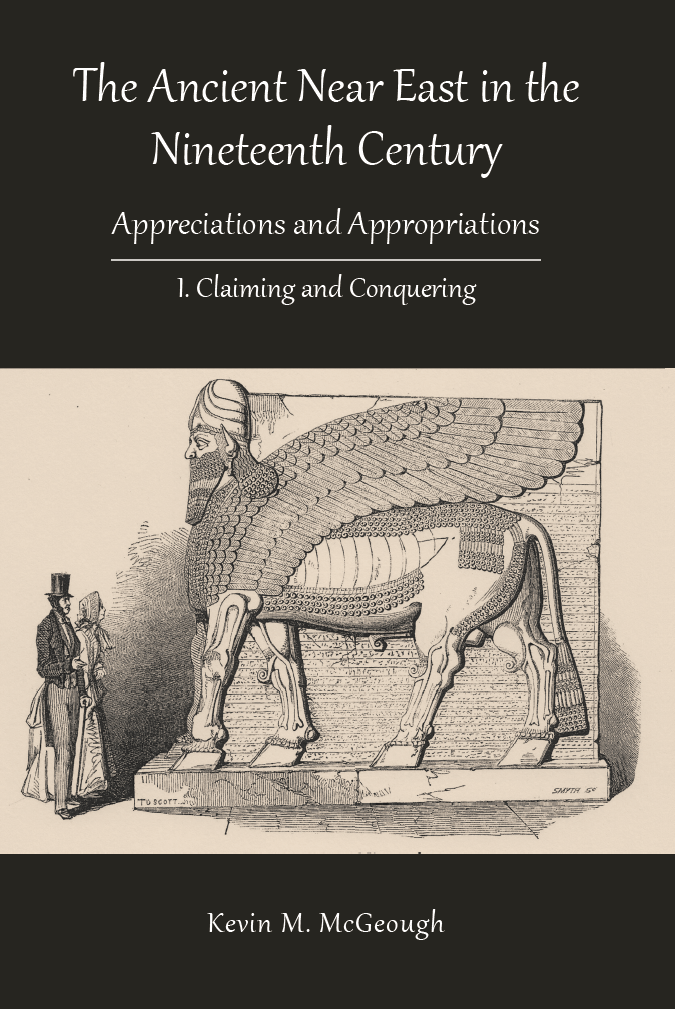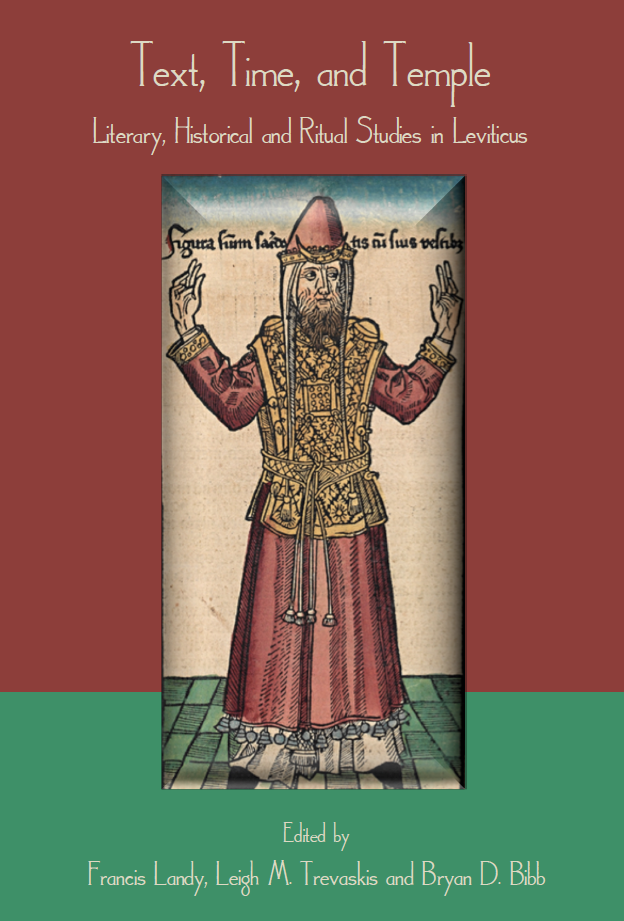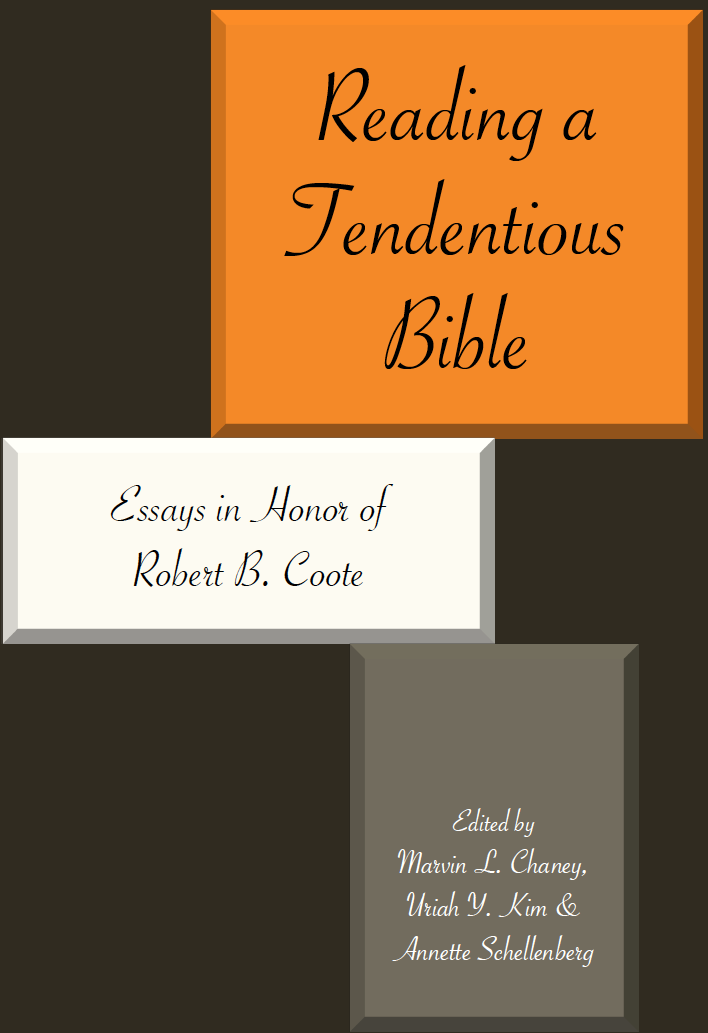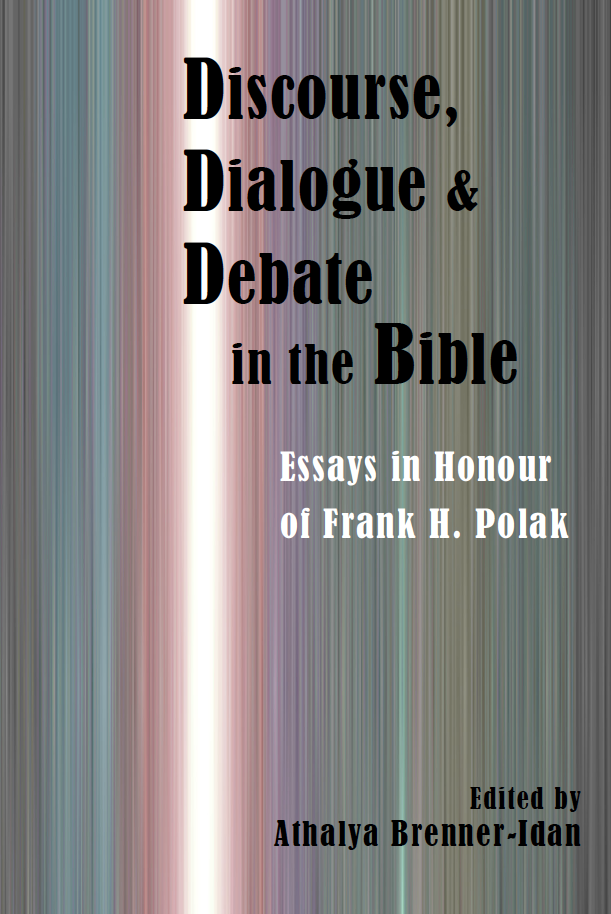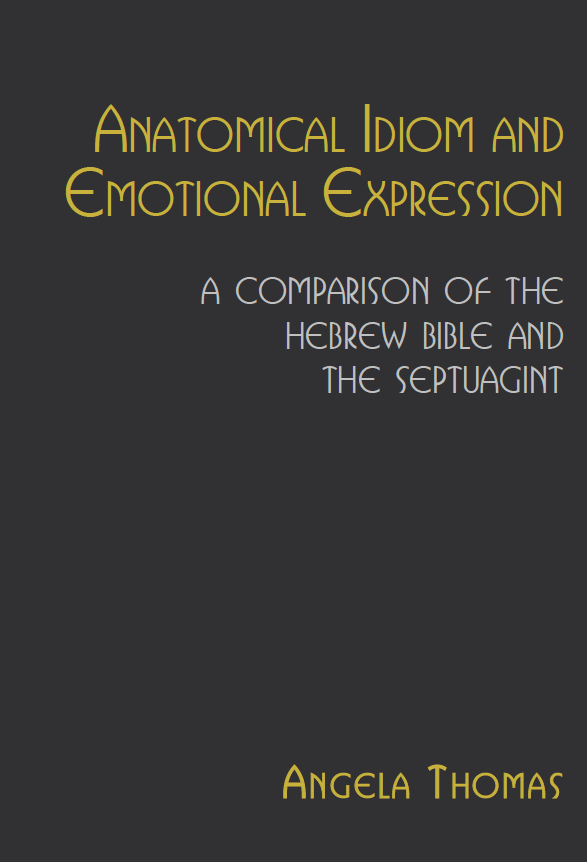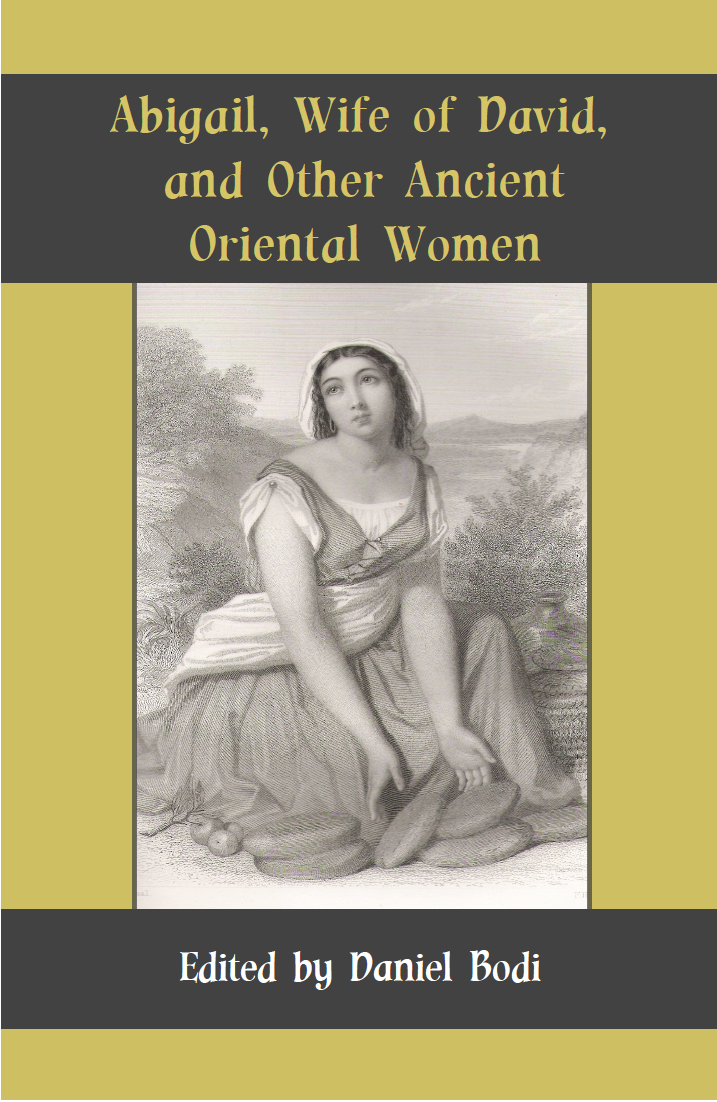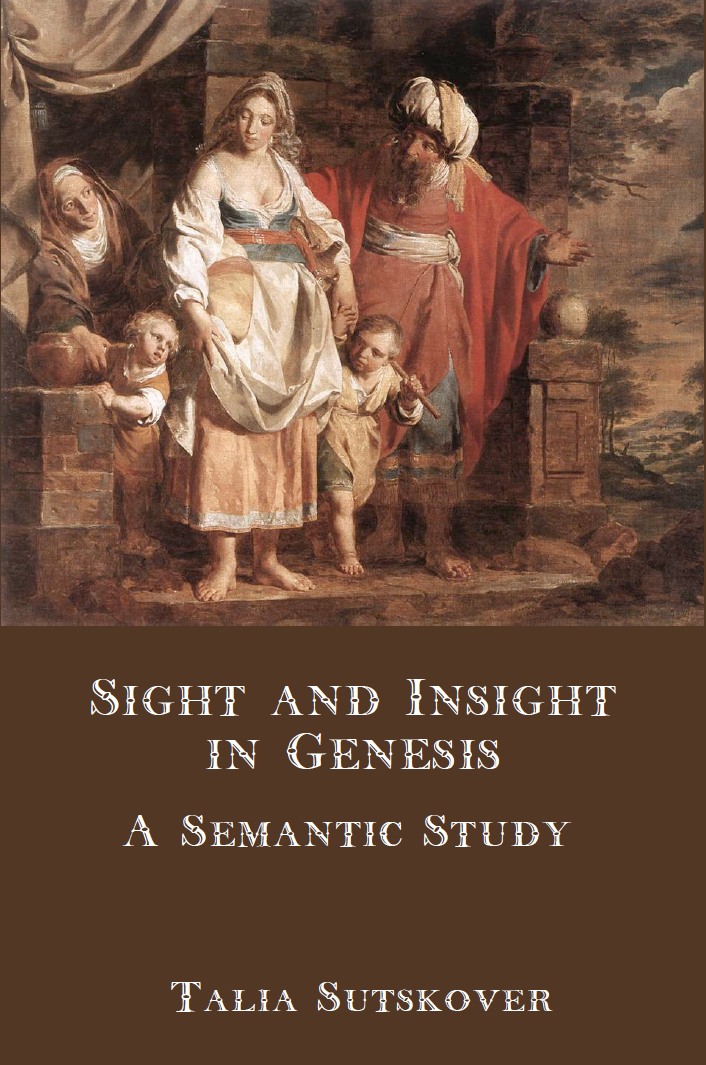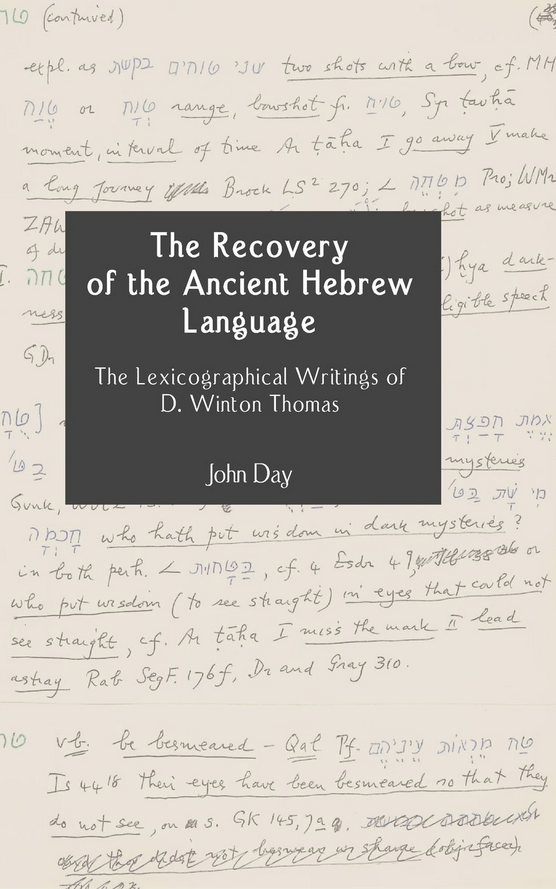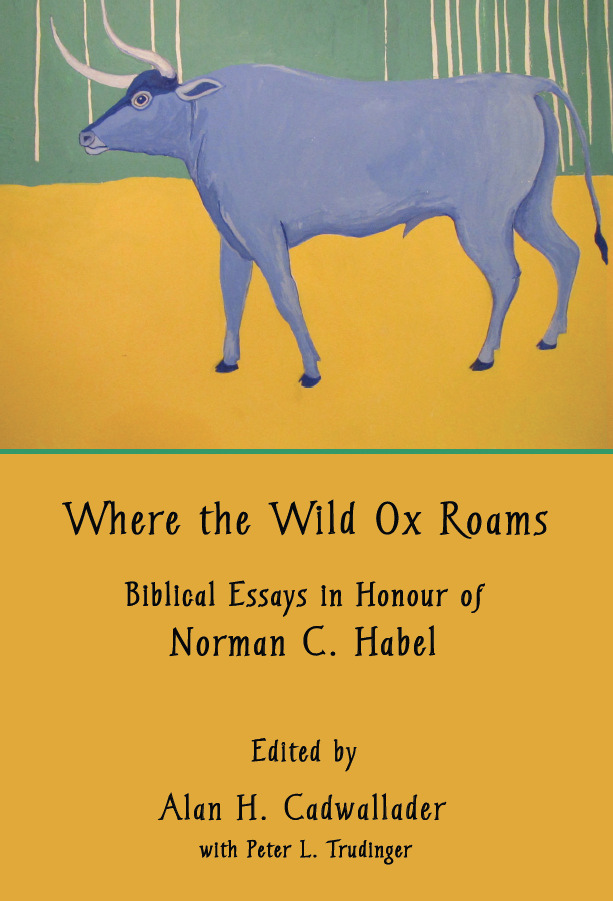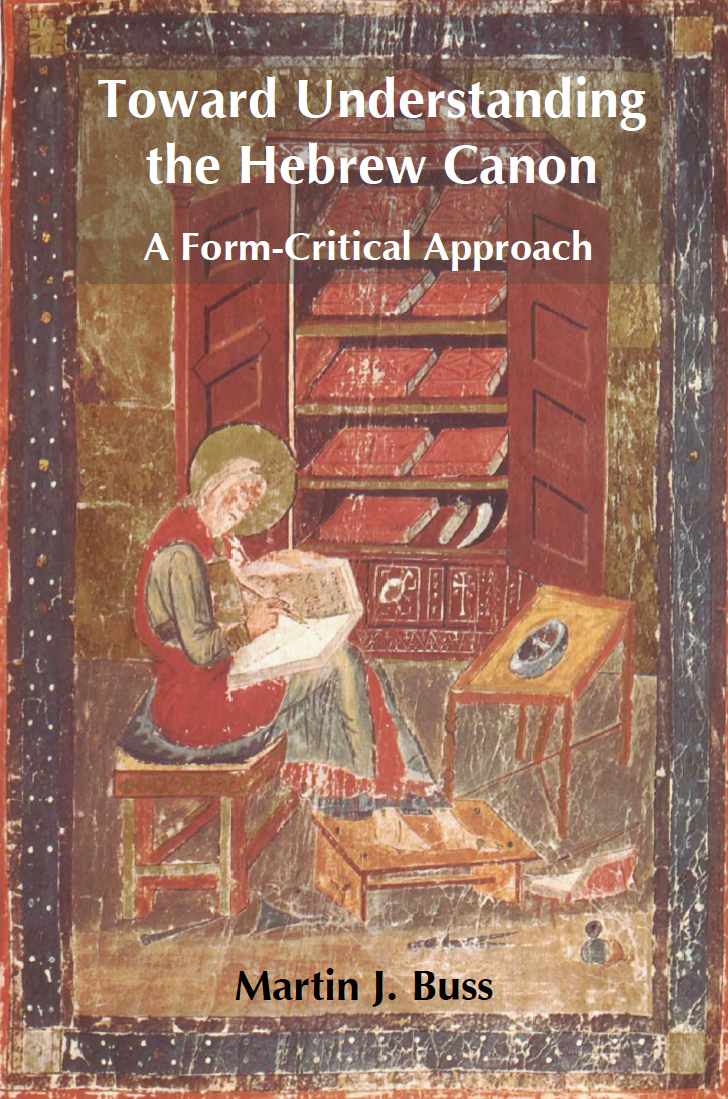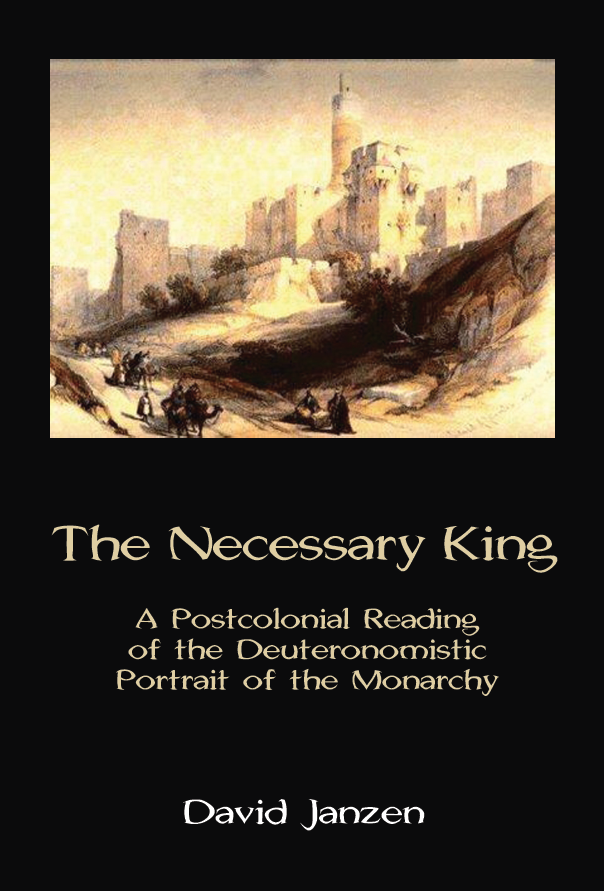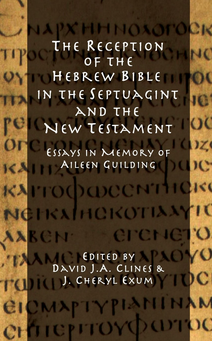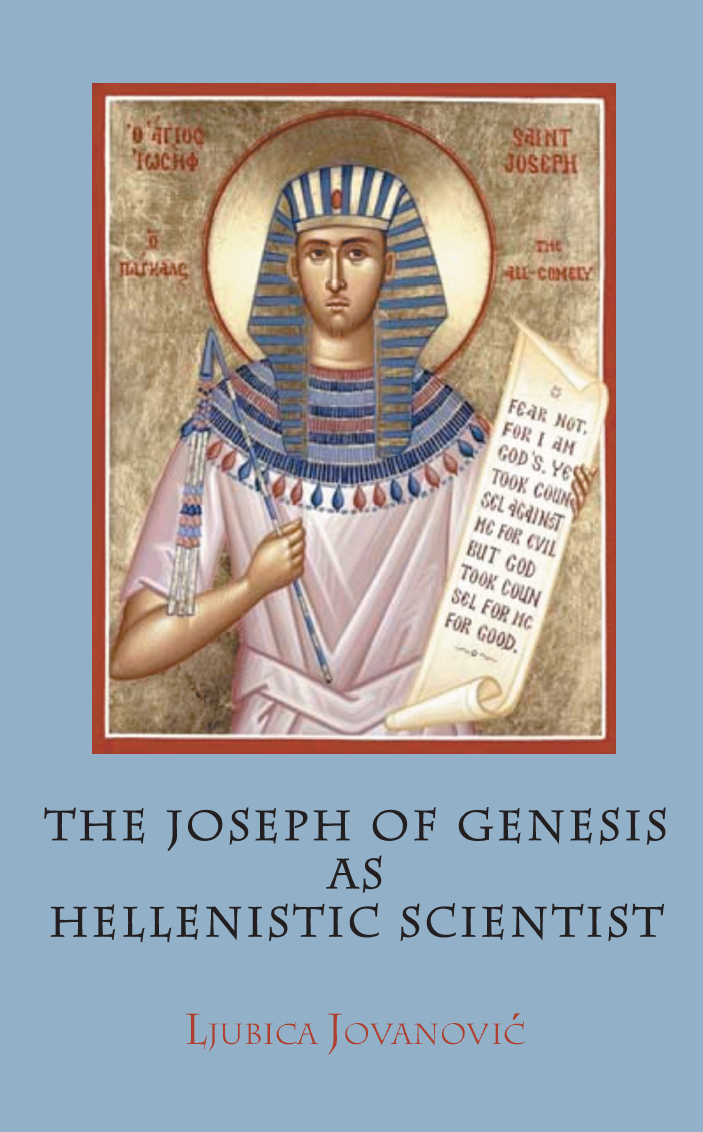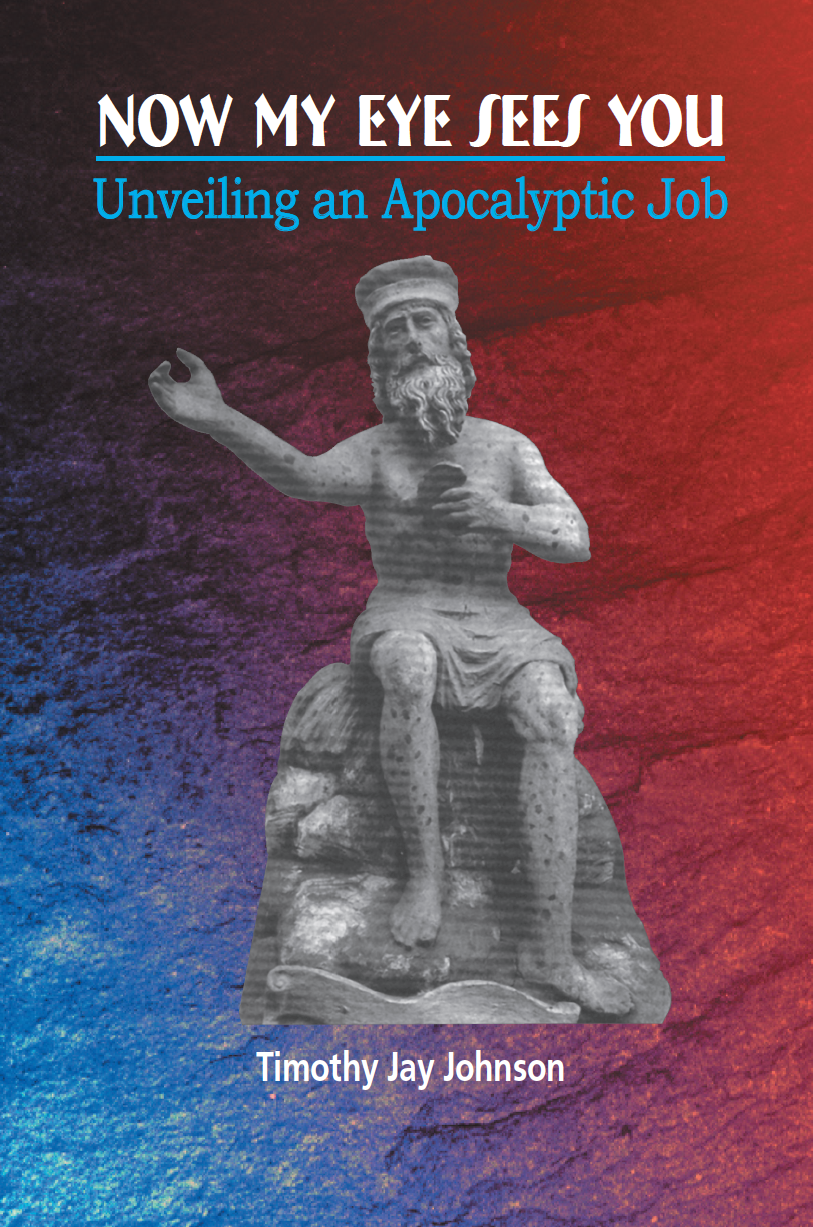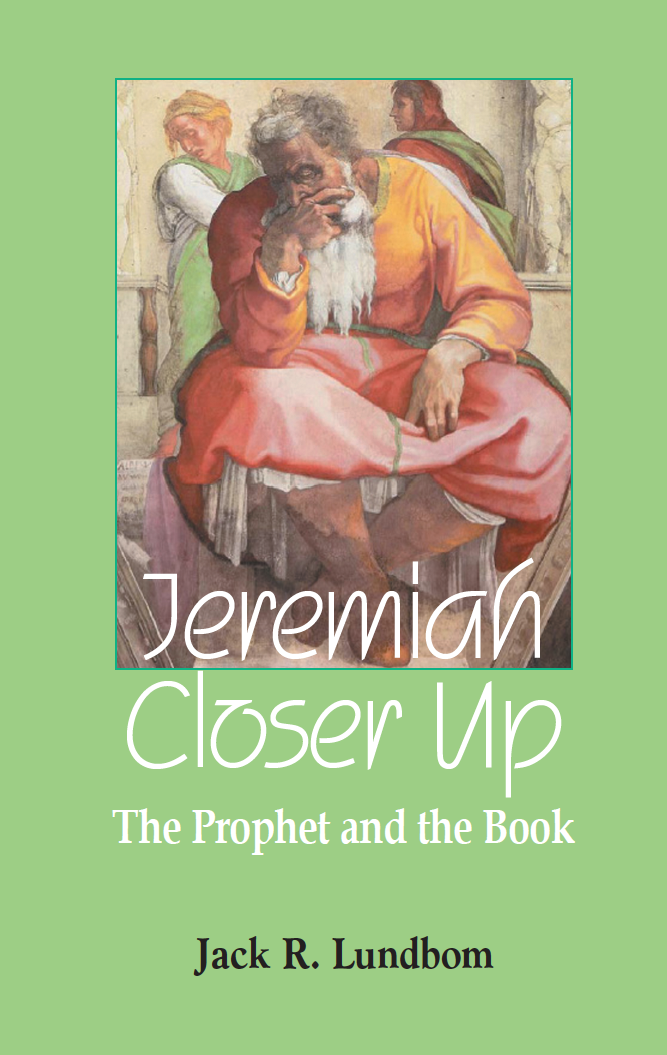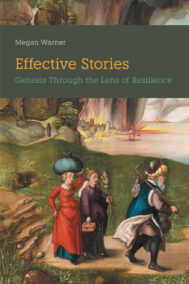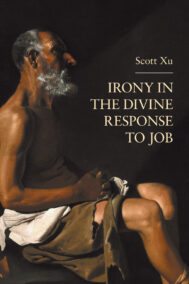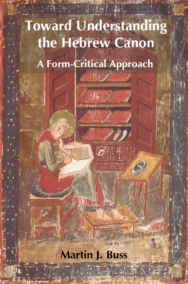The Subversive Chronicler: Narrative Film Theory and Canon Criticism Refocus his Intention
Published: Nov 2019
£55.00
In 1 and 2 Chronicles, commentators have long noted a pattern of retributive justice whereby kings who comply with Yahweh's will are rewarded with long life and honourable burial, whereas those who do not are disgraced. However, another pattern significantly emerges from a group of kings whose careers display an unexpected reversal. No convincing consensus has yet emerged to explain this reversal pattern.
By exploring and adopting the insights of narrative film theory, particularly of cognitive film semiotics, into the effects of macro-repetition, Son uncovers the implications of these unexpected reversals. As the reversal pattern is interwoven with the retributive pattern, the narrative emerges as a falsifying narration, provoking a deep scepticism about the conventional view of retribution theology.
Deleuzian film theory offers a crucial insight into how this falsifying narration works. The reversal pattern has a destabilizing effect, which suggests that the Chronicler's theological outlook is more nuanced than that of Samuel —Kings, or perhaps even frankly subversive of it. From a canonical perspective, furthermore, the presence of the Chronicler's work in the Ketuvim points to its potential function as a subtle theological readjustment in the postexilic Jewish community.
The Subversive Chronicler is then a challenge to the Chronicler's theology as it is commonly understood and also as a refocusing of its difference from the historiography of Samuel —Kings.
The Subversive Chronicler: Narrative Film Theory and Canon Criticism Refocus his Intention
£55.00
In 1 and 2 Chronicles, commentators have long noted a pattern of retributive justice whereby kings who comply with Yahweh's will are rewarded with long life and honourable burial, whereas those who do not are disgraced. However, another pattern significantly emerges from a group of kings whose careers display an unexpected reversal. No convincing consensus has yet emerged to explain this reversal pattern.
By exploring and adopting the insights of narrative film theory, particularly of cognitive film semiotics, into the effects of macro-repetition, Son uncovers the implications of these unexpected reversals. As the reversal pattern is interwoven with the retributive pattern, the narrative emerges as a falsifying narration, provoking a deep scepticism about the conventional view of retribution theology.
Deleuzian film theory offers a crucial insight into how this falsifying narration works. The reversal pattern has a destabilizing effect, which suggests that the Chronicler's theological outlook is more nuanced than that of Samuel —Kings, or perhaps even frankly subversive of it. From a canonical perspective, furthermore, the presence of the Chronicler's work in the Ketuvim points to its potential function as a subtle theological readjustment in the postexilic Jewish community.
The Subversive Chronicler is then a challenge to the Chronicler's theology as it is commonly understood and also as a refocusing of its difference from the historiography of Samuel —Kings.
The Multifaceted Saviour of Psalms 110 and 118: A Canonical Exegesis
Published: Nov 2019
£55.00
Since Gerald H. Wilson's landmark work, The Editing of the Hebrew Psalter (1985), scholars have been divided on how to interpret the appearances of the king in Book V (Psalms 107 —150). Many have agreed with Wilson in seeing a disjunction between Psalms 1 —89 and 90 —150, with Psalm 89 representing the apparent failure of the Davidic covenant, and signalling its replacement by a hope in the direct intervention of Yhwh without a role for a Davidic king. Although others have countered that Book V marks a return of the king, with references to David pointing to renewed hope in the Davidic covenant, in both cases scholars have interacted with the question as it was framed by Wilson.
Vaillancourt moves the discussion forward by broadening the question to the portrayal of the figure of salvation in Book V of the Psalms, and by narrowing the scope to detailed canonical exegesis on two of its most salient psalms.
Canonical exegesis of Psalm 110 displays a cosmic king at the right hand of Yhwh, who has a willing army at his disposal, who will mediate as priest between his people and Yhwh, and who will also accomplish a definitive victory for the people of God.
Canonical exegesis of Psalm 118 displays a suffering and conquering king who leads the victory procession from the battle-field, one whose role resonates with a prophetic figure like Moses (cf. Deut. 18.18), as he echoes the songs of the first (Exod. 15) and of a second exodus (Isa. 12) in his responsive song of thanks (vv. 19 —28).
In the final form of the book of Psalms, the Saviour figure in these psalms emerges as an eschatological figure of salvation who encompasses many hoped-for figures from across the Old Testament in one person, the one who will achieved full-scale deliverance for the people of God.
The Multifaceted Saviour of Psalms 110 and 118: A Canonical Exegesis
£55.00
Since Gerald H. Wilson's landmark work, The Editing of the Hebrew Psalter (1985), scholars have been divided on how to interpret the appearances of the king in Book V (Psalms 107 —150). Many have agreed with Wilson in seeing a disjunction between Psalms 1 —89 and 90 —150, with Psalm 89 representing the apparent failure of the Davidic covenant, and signalling its replacement by a hope in the direct intervention of Yhwh without a role for a Davidic king. Although others have countered that Book V marks a return of the king, with references to David pointing to renewed hope in the Davidic covenant, in both cases scholars have interacted with the question as it was framed by Wilson.
Vaillancourt moves the discussion forward by broadening the question to the portrayal of the figure of salvation in Book V of the Psalms, and by narrowing the scope to detailed canonical exegesis on two of its most salient psalms.
Canonical exegesis of Psalm 110 displays a cosmic king at the right hand of Yhwh, who has a willing army at his disposal, who will mediate as priest between his people and Yhwh, and who will also accomplish a definitive victory for the people of God.
Canonical exegesis of Psalm 118 displays a suffering and conquering king who leads the victory procession from the battle-field, one whose role resonates with a prophetic figure like Moses (cf. Deut. 18.18), as he echoes the songs of the first (Exod. 15) and of a second exodus (Isa. 12) in his responsive song of thanks (vv. 19 —28).
In the final form of the book of Psalms, the Saviour figure in these psalms emerges as an eschatological figure of salvation who encompasses many hoped-for figures from across the Old Testament in one person, the one who will achieved full-scale deliverance for the people of God.
The Song of Songs Afresh: Perspectives on a Biblical Love Poem
Published: Oct 2019
£60.00
This volume is one of the fruits of a six-year series of international conferences on the Song of Songs. The 13 diverse articles here being presented in four categories.
1. Classical exegetical studies. What does the blackness of the woman signify? Ausloos sees a tension between an exegetically appropriate and a politically correct interpretation, Biernot an example of Jewish discourse on blackness and whiteness ranging from antiquity to modern times. The function of the so-called dream in the Song is examined in the context of dreams in the ancient Near East with their two kinds of wake-up expressions (Fernandes). Fischer sees the daughters of Jerusalem as a means of identification for the reader and as placeholders for the young women of society. Next are intertextual readings of the Shulammite with a South African poem (Lombaard) and of the Song's vision of love with mythological traces in the Hebrew Bible (Mathys).
2. Post-modern exegetical studies. Included is a dialogue on horses in love and war (Landy and Metzler), a psychoanalytical reading on the theme of death (van der Zwan), and a blend of Ricoeur and cognitive metaphor theory that profiles the man in the Song (Verde).
3. Jewish studies. Baraniak studies the targumic exegesis, and DamohorskÌÁ the Song in Passover Piyyutim.
4. Hermeneutics. Responsible exegesis of the Song is Oosthuizen's theme, and Scheffler's is varieties of allegorizing.
The Song of Songs Afresh: Perspectives on a Biblical Love Poem
£60.00
This volume is one of the fruits of a six-year series of international conferences on the Song of Songs. The 13 diverse articles here being presented in four categories.
1. Classical exegetical studies. What does the blackness of the woman signify? Ausloos sees a tension between an exegetically appropriate and a politically correct interpretation, Biernot an example of Jewish discourse on blackness and whiteness ranging from antiquity to modern times. The function of the so-called dream in the Song is examined in the context of dreams in the ancient Near East with their two kinds of wake-up expressions (Fernandes). Fischer sees the daughters of Jerusalem as a means of identification for the reader and as placeholders for the young women of society. Next are intertextual readings of the Shulammite with a South African poem (Lombaard) and of the Song's vision of love with mythological traces in the Hebrew Bible (Mathys).
2. Post-modern exegetical studies. Included is a dialogue on horses in love and war (Landy and Metzler), a psychoanalytical reading on the theme of death (van der Zwan), and a blend of Ricoeur and cognitive metaphor theory that profiles the man in the Song (Verde).
3. Jewish studies. Baraniak studies the targumic exegesis, and DamohorskÌÁ the Song in Passover Piyyutim.
4. Hermeneutics. Responsible exegesis of the Song is Oosthuizen's theme, and Scheffler's is varieties of allegorizing.
God and Humans in the Hebrew Bible and Beyond: A Festschrift for Lennart Boström on his 67th Birthday
Published: Sep 2019
£70.00
In 1990, in his important study The God of the Sages: The Portrayal of God in the Book of Proverbs, Lennart Boström tackled the issue of how the sages viewed their God and God's relationship with the world. In honour of Boström, and in line with that study, this Festschrift takes up this issue anew. A number of international specialists, including James Crenshaw, Göran Eidevall, Mark A. Throntveit, and Antti Laato, discuss various aspects of how God and humans are portrayed in the Bible.
The first section of the book focuses on notions of God. There is a fresh look at monolatry in the Hebrew Bible, and at God's faithfulness in Paul's soteriology. The second section deals with humans, featuring, for example, two articles on Psalm 8.5, one with a focus on the Hebrew Bible, and the other reading the psalm through the eyes of women in Myanmar. There is also an article on angst in wisdom literature.
The third section brings God and humans into dialogue, looking at how various interpretations of suffering in the psalms shape the view of the divine —human relationship, or how God and humans relate to each other in books like Jonah and Ruth. The fourth and last section of the book focuses on God and God's people, where new proposals are presented on the roles played by Zion and by the ten commandments.
This volume presents stimulating and up-to-date engagements with its theme, an excellent resource for scholars of both the Hebrew Bible and the New Testament.
God and Humans in the Hebrew Bible and Beyond: A Festschrift for Lennart Boström on his 67th Birthday
£70.00
In 1990, in his important study The God of the Sages: The Portrayal of God in the Book of Proverbs, Lennart Boström tackled the issue of how the sages viewed their God and God's relationship with the world. In honour of Boström, and in line with that study, this Festschrift takes up this issue anew. A number of international specialists, including James Crenshaw, Göran Eidevall, Mark A. Throntveit, and Antti Laato, discuss various aspects of how God and humans are portrayed in the Bible.
The first section of the book focuses on notions of God. There is a fresh look at monolatry in the Hebrew Bible, and at God's faithfulness in Paul's soteriology. The second section deals with humans, featuring, for example, two articles on Psalm 8.5, one with a focus on the Hebrew Bible, and the other reading the psalm through the eyes of women in Myanmar. There is also an article on angst in wisdom literature.
The third section brings God and humans into dialogue, looking at how various interpretations of suffering in the psalms shape the view of the divine —human relationship, or how God and humans relate to each other in books like Jonah and Ruth. The fourth and last section of the book focuses on God and God's people, where new proposals are presented on the roles played by Zion and by the ten commandments.
This volume presents stimulating and up-to-date engagements with its theme, an excellent resource for scholars of both the Hebrew Bible and the New Testament.
Hebrew Masculinities Anew
Published: Jun 2019
£65.00
The study of biblical masculinities is now a clearly recognizable discipline in critical biblical gender studies. This book, the third in a series of SPP volumes that include Men and Masculinity in the Hebrew Bible and Beyond (ed. Ovidiu Creangă, 2010) and Biblical Masculinities Foregrounded (ed. Ovidiu Creangă and Peter-Ben Smit, 2014), takes stock of recent methodological and thematic developments, while introducing fresh new questions, expanding traditional approaches, and adding new texts to the corpus of masculinities in the Hebrew Bible.
The volume's introduction (Ovidiu Creangă) celebrates the rich palette of approaches and disciplinary intersections that now characterize the study of Hebrew Bible masculinities, while calling attention to understudied topics. The next thirteen chapters dig deep into the methodological building-blocks underpinning biblical masculinity (Stephen Wilson); the theoretically essential distinction between queer and non-queer masculinities (Gil Rosenberg); the often-neglected yet essential representation of God's masculinity (David J.A. Clines); the competing masculinities of God, Pharaoh, and Moses in historical and lesbian perspective (Caralie Focht and Richard Purcell); Queen Jezebel's performance of masculinity (Hilary Lipka); Priestly and Deuteronomic fantasies of male perfection (Sandra Jacobs); the problem-ridden masculinity of Moses (Amy Kalmanofsky); the rhetoric of 'queen-making' in the prophetic literature (Susan E. Haddox); Jonah's homosocial masculinity (Rhiannon Graybill); the scribal masculinity of Daniel (Brian C. DiPalma); the ephemeral masculinity of mortal men (Milena Kirova); the masculine agencies in the Song of Songs (Martti Nissinen); and the intertwining of money and masculinity in the Book of Proverbs (Kelly Murphy). In the final chapter, Stuart Macwilliam reflects on methodological opportunities, thematic expansions, and a future direction for biblical masculinities.
Hebrew Masculinities Anew
£65.00
The study of biblical masculinities is now a clearly recognizable discipline in critical biblical gender studies. This book, the third in a series of SPP volumes that include Men and Masculinity in the Hebrew Bible and Beyond (ed. Ovidiu Creangă, 2010) and Biblical Masculinities Foregrounded (ed. Ovidiu Creangă and Peter-Ben Smit, 2014), takes stock of recent methodological and thematic developments, while introducing fresh new questions, expanding traditional approaches, and adding new texts to the corpus of masculinities in the Hebrew Bible.
The volume's introduction (Ovidiu Creangă) celebrates the rich palette of approaches and disciplinary intersections that now characterize the study of Hebrew Bible masculinities, while calling attention to understudied topics. The next thirteen chapters dig deep into the methodological building-blocks underpinning biblical masculinity (Stephen Wilson); the theoretically essential distinction between queer and non-queer masculinities (Gil Rosenberg); the often-neglected yet essential representation of God's masculinity (David J.A. Clines); the competing masculinities of God, Pharaoh, and Moses in historical and lesbian perspective (Caralie Focht and Richard Purcell); Queen Jezebel's performance of masculinity (Hilary Lipka); Priestly and Deuteronomic fantasies of male perfection (Sandra Jacobs); the problem-ridden masculinity of Moses (Amy Kalmanofsky); the rhetoric of 'queen-making' in the prophetic literature (Susan E. Haddox); Jonah's homosocial masculinity (Rhiannon Graybill); the scribal masculinity of Daniel (Brian C. DiPalma); the ephemeral masculinity of mortal men (Milena Kirova); the masculine agencies in the Song of Songs (Martti Nissinen); and the intertwining of money and masculinity in the Book of Proverbs (Kelly Murphy). In the final chapter, Stuart Macwilliam reflects on methodological opportunities, thematic expansions, and a future direction for biblical masculinities.
Ancestral Queerness: The Normal and the Deviant in the Abraham and Sarah Narratives
Published: May 2019
£50.00
What would it look like to be queer in the time of Abraham and Sarah? What is normative and what is deviant in their stories? What does this have to do with queer lives today?
In Ancestral Queerness, Gil Rosenberg uses a careful comparative method to develop a cross-cultural queer category ('Queer'). He applies this category to Abraham and Sarah and argues that, Abraham and Sarah may usefully be regarded as 'Queer'.
Rosenberg's comparisons draw on a variety of contemporary queer stories, scholarship, and theories. These include a lesbian mother trying to support her partner and newborn daughter, Australian polyamorous families, Lee Edelman's figure of the Child, and gay men building families through surrogacy.
These comparisons lead Rosenberg to surprising new interpretations of several key passages in Genesis 11 —21. For example, he argues that Abraham wants to hide his marriage to Sarah because their relationship is a queer one, and that Sarah may not actually be wanting a biological child. Rosenberg also highlights the combination of normative and deviant elements in Abraham's strategies for obtaining an heir, and the role of ethnic and class difference in Abraham's and Sarah's efforts to become more normative.
Bold in its conclusions but careful and precise in its method, Ancestral Queerness breaks new ground by developing a queer theory applicable to diverse cultures, revealing the bias in previous scholarship on Abraham and Sarah, and opening up new paths of interpretation in their narratives.
Ancestral Queerness: The Normal and the Deviant in the Abraham and Sarah Narratives
£50.00
What would it look like to be queer in the time of Abraham and Sarah? What is normative and what is deviant in their stories? What does this have to do with queer lives today?
In Ancestral Queerness, Gil Rosenberg uses a careful comparative method to develop a cross-cultural queer category ('Queer'). He applies this category to Abraham and Sarah and argues that, Abraham and Sarah may usefully be regarded as 'Queer'.
Rosenberg's comparisons draw on a variety of contemporary queer stories, scholarship, and theories. These include a lesbian mother trying to support her partner and newborn daughter, Australian polyamorous families, Lee Edelman's figure of the Child, and gay men building families through surrogacy.
These comparisons lead Rosenberg to surprising new interpretations of several key passages in Genesis 11 —21. For example, he argues that Abraham wants to hide his marriage to Sarah because their relationship is a queer one, and that Sarah may not actually be wanting a biological child. Rosenberg also highlights the combination of normative and deviant elements in Abraham's strategies for obtaining an heir, and the role of ethnic and class difference in Abraham's and Sarah's efforts to become more normative.
Bold in its conclusions but careful and precise in its method, Ancestral Queerness breaks new ground by developing a queer theory applicable to diverse cultures, revealing the bias in previous scholarship on Abraham and Sarah, and opening up new paths of interpretation in their narratives.
United in Exile, Reunited in Restoration: The Chronicler’s Agenda
Published: May 2019
£50.00
The books of 1 —2 Chronicles, though ostensibly a history work recounting the past, is in reality a challenge to its fourth-century Jewish audience in Babylonia to make a vital decision about their future. They are presented with the choice of remaining in exile, where they have been born, or of uprooting themselves and travelling to their ancestral but unknown land.
By introducing unique accounts of exile, such as that of the Reubenite leader Beerah (1 Chron. 5), and by reinterpreting familiar accounts of forced migration, such as the Babylonian exile of 'all Israel', the Chronicler reveals the current state of Israel in exile. As he looks into the future, he inserts pleas for restoration on the lips of Hebrew heroes such as David and Hezekiah, along with stories of transformation, like Manasseh's return from humiliating captivity, to educate his readers about their role in completing the process of restoration for all Israel.
Since the exile meant Jerusalem's reduction, the end of the Davidic monarchy, and the scattering of tribal Israel, restoration would mean 'all Israel' reunited in Jerusalem under the levitical priesthood in worship at the rebuilt temple. Cyrus's decree, inspired by Yahweh, had commanded that all God's people 'go up', but Second Temple Israel had stalled somewhere between exile and restoration. Therefore, the Chronicler urges all Diaspora Israel to return home.
Previous studies of the exile —restoration theme in segments of Chronicles (mainly 2 Chron. 36) and in Chronicles —Ezra —Nehemiah have led to the distorted view that the Chronicler is proclaiming victory over exile. Heard on his own terms, the Chronicler is rather dissatisfied with Israel's current state of restoration, optimistic that reunion in Jerusalem will conclude the exile, and adamant that 'all Israel' must take responsibility for the nation's sin and judgment —and restoration.
United in Exile, Reunited in Restoration: The Chronicler’s Agenda
£50.00
The books of 1 —2 Chronicles, though ostensibly a history work recounting the past, is in reality a challenge to its fourth-century Jewish audience in Babylonia to make a vital decision about their future. They are presented with the choice of remaining in exile, where they have been born, or of uprooting themselves and travelling to their ancestral but unknown land.
By introducing unique accounts of exile, such as that of the Reubenite leader Beerah (1 Chron. 5), and by reinterpreting familiar accounts of forced migration, such as the Babylonian exile of 'all Israel', the Chronicler reveals the current state of Israel in exile. As he looks into the future, he inserts pleas for restoration on the lips of Hebrew heroes such as David and Hezekiah, along with stories of transformation, like Manasseh's return from humiliating captivity, to educate his readers about their role in completing the process of restoration for all Israel.
Since the exile meant Jerusalem's reduction, the end of the Davidic monarchy, and the scattering of tribal Israel, restoration would mean 'all Israel' reunited in Jerusalem under the levitical priesthood in worship at the rebuilt temple. Cyrus's decree, inspired by Yahweh, had commanded that all God's people 'go up', but Second Temple Israel had stalled somewhere between exile and restoration. Therefore, the Chronicler urges all Diaspora Israel to return home.
Previous studies of the exile —restoration theme in segments of Chronicles (mainly 2 Chron. 36) and in Chronicles —Ezra —Nehemiah have led to the distorted view that the Chronicler is proclaiming victory over exile. Heard on his own terms, the Chronicler is rather dissatisfied with Israel's current state of restoration, optimistic that reunion in Jerusalem will conclude the exile, and adamant that 'all Israel' must take responsibility for the nation's sin and judgment —and restoration.
The Decalogue and its Cultural Influence
Published: Oct 2017
Price range: £33.00 through £70.00
Reception history is one of the most inviting, yet also one of the most difficult, fields in the study of the Bible today. It is difficult because it involves so many layers of expertise. The reception-historian does not only need a comprehensive knowledge and understanding of the biblical text itself, but also familiarity with the cultures and intellectual background of the many diverse ages in which it has been read and appropriated; and in addition needs to be versed in media other than writing, including the visual and performing arts.
But it is inviting because it carries its practitioners so far beyond the confines of ordinary textual study, with its concern for language and text, and out into an ocean of interdisciplinary engagement with writings that have, after all, stimulated the imaginations as well as the intellects of generations of religious (and non-religious) readers. The Decalogue is an obvious candidate for a reception-historical treatment. It has acquired over the centuries an enormous weight of commentary, and has been assimilated into the most varied cultures. Though a text, it has often also been an icon, appearing on walls in churches and now even in American courthouses. The subject was ripe for study, and the conference at which the papers in this book were delivered marked a significant milestone in biblical reception history' (from John Barton's Preface to the volume).
The 21 papers in this volume offer the richest and most wide-ranging interdisciplinary collection of studies on the reception of the Decalogue in culture, and will prove to be a fundamental resource for students of the biblical text and of the reception of the Bible in general.
The Decalogue and its Cultural Influence
Price range: £33.00 through £70.00
Reception history is one of the most inviting, yet also one of the most difficult, fields in the study of the Bible today. It is difficult because it involves so many layers of expertise. The reception-historian does not only need a comprehensive knowledge and understanding of the biblical text itself, but also familiarity with the cultures and intellectual background of the many diverse ages in which it has been read and appropriated; and in addition needs to be versed in media other than writing, including the visual and performing arts.
But it is inviting because it carries its practitioners so far beyond the confines of ordinary textual study, with its concern for language and text, and out into an ocean of interdisciplinary engagement with writings that have, after all, stimulated the imaginations as well as the intellects of generations of religious (and non-religious) readers. The Decalogue is an obvious candidate for a reception-historical treatment. It has acquired over the centuries an enormous weight of commentary, and has been assimilated into the most varied cultures. Though a text, it has often also been an icon, appearing on walls in churches and now even in American courthouses. The subject was ripe for study, and the conference at which the papers in this book were delivered marked a significant milestone in biblical reception history' (from John Barton's Preface to the volume).
The 21 papers in this volume offer the richest and most wide-ranging interdisciplinary collection of studies on the reception of the Decalogue in culture, and will prove to be a fundamental resource for students of the biblical text and of the reception of the Bible in general.
Biblical Masculinities Foregrounded
Published: Oct 2017
Price range: £25.00 through £65.00
Biblical Masculinities Foregrounded brings together ten innovative studies on varieties of masculinity evidenced in the Hebrew Bible, the New Testament and other early Christian writings. A sequel to the 2010 collection, Men and Masculinity in the Hebrew Bible and Beyond, this new volume raises important questions about why the study of biblical masculinities matters, what it contributes to our knowledge of the ancient writers' world as well as to our contemporary world, and which methods adequately attend to that study. The volume is designed as a resource for scholars of both Testaments working from a variety of biblical traditions and ideological perspectives on masculinity.
The following studies are offered as companions in the conversation: Yahweh's masculinity in appearances in glory in Exodus and Ezekiel (Alan Hooker); Proverbs' (de)construction of masculinity (Hilary Lipka); Saul's troubled masculinity in 1 —2 Samuel (Marcel M€Äcelaru); weeping men in the Torah and the Deuteronomistic history (Milena Kirova); Athaliah's manly rule (Stuart Macwilliam); Joseph of Nazareth as an everyday man (Justin Glessner); being a male disciple in Matthew's 'antitheses' (Hans-Ulrich Weidemann); eunuch masculinity in Matthew's Gospel (Susanna Asikainen); masculinity and circumcision in the first century (Karin Neutel and Matthew Anderson); and Thecla's masculinity in the Acts of Thecla (Peter-Ben Smit). Ovidiu Creangă opens the volume with a critical appraisal of the current state of play in the field, while Martti Nissinen and Bjorn Krondorfer offer closing critical reflections that situate the book's topics within broader debates regarding masculinities in religious studies.
Biblical Masculinities Foregrounded
Price range: £25.00 through £65.00
Biblical Masculinities Foregrounded brings together ten innovative studies on varieties of masculinity evidenced in the Hebrew Bible, the New Testament and other early Christian writings. A sequel to the 2010 collection, Men and Masculinity in the Hebrew Bible and Beyond, this new volume raises important questions about why the study of biblical masculinities matters, what it contributes to our knowledge of the ancient writers' world as well as to our contemporary world, and which methods adequately attend to that study. The volume is designed as a resource for scholars of both Testaments working from a variety of biblical traditions and ideological perspectives on masculinity.
The following studies are offered as companions in the conversation: Yahweh's masculinity in appearances in glory in Exodus and Ezekiel (Alan Hooker); Proverbs' (de)construction of masculinity (Hilary Lipka); Saul's troubled masculinity in 1 —2 Samuel (Marcel M€Äcelaru); weeping men in the Torah and the Deuteronomistic history (Milena Kirova); Athaliah's manly rule (Stuart Macwilliam); Joseph of Nazareth as an everyday man (Justin Glessner); being a male disciple in Matthew's 'antitheses' (Hans-Ulrich Weidemann); eunuch masculinity in Matthew's Gospel (Susanna Asikainen); masculinity and circumcision in the first century (Karin Neutel and Matthew Anderson); and Thecla's masculinity in the Acts of Thecla (Peter-Ben Smit). Ovidiu Creangă opens the volume with a critical appraisal of the current state of play in the field, while Martti Nissinen and Bjorn Krondorfer offer closing critical reflections that situate the book's topics within broader debates regarding masculinities in religious studies.
The Female Ruse: Women’s Deception and Divine Sanction in the Hebrew Bible
Published: Sep 2017
Price range: £25.00 through £60.00
From Eve to Esther, the Hebrew Bible is replete with gendered tales of trickery. A lie is uttered, a mask donned, a seduction staged, while redemption is propelled forward, guided by the divine hand. From the first 'female ruse' — Eve presenting the fruit of the tree of knowledge to Adam — humanity becomes embodied, engaged in history, moving from the Garden to exile, from wandering to homeland and redemption (and back again). Consider Rebekah dressing her beloved son in goatskins to steal the blessing from his blind father; Lot's daughters lying with their drunken father, and then conceiving the founding fathers of Ammon and Moab; Leah and Rachel, the mothers of the twelve tribes of Israel, duping Jacob on their wedding night; Tamar's seduction of Judah, her father-in-law, who then bears the progenitor of the Davidic line; Naomi sending Ruth to the threshing floor to seduce Boaz by night; Bathsheba invoking an oath that King David had supposedly made in order to forward Solomon, her son, as successor to the monarchy; and Queen Esther concealing her Jewish identity in the Persian imperial court. Over the course of nine chapters, the author traces these narratives of deception; in each case, God is in cahoots with these feminine agents in advancing the providential plan. A tension holds between the 'best laid plans' of men and the divine will as forwarded by women. Drawing on classic rabbinic sources and modern literary exegesis, the author exposes the conflict between the simple progression of genealogies and the process of selection through alliances of family and kin. Women are at the crux of that conflict, seemingly compelled to choose the indirect route while the deity appears to endorse their lie.
The Female Ruse: Women’s Deception and Divine Sanction in the Hebrew Bible
Price range: £25.00 through £60.00
From Eve to Esther, the Hebrew Bible is replete with gendered tales of trickery. A lie is uttered, a mask donned, a seduction staged, while redemption is propelled forward, guided by the divine hand. From the first 'female ruse' — Eve presenting the fruit of the tree of knowledge to Adam — humanity becomes embodied, engaged in history, moving from the Garden to exile, from wandering to homeland and redemption (and back again). Consider Rebekah dressing her beloved son in goatskins to steal the blessing from his blind father; Lot's daughters lying with their drunken father, and then conceiving the founding fathers of Ammon and Moab; Leah and Rachel, the mothers of the twelve tribes of Israel, duping Jacob on their wedding night; Tamar's seduction of Judah, her father-in-law, who then bears the progenitor of the Davidic line; Naomi sending Ruth to the threshing floor to seduce Boaz by night; Bathsheba invoking an oath that King David had supposedly made in order to forward Solomon, her son, as successor to the monarchy; and Queen Esther concealing her Jewish identity in the Persian imperial court. Over the course of nine chapters, the author traces these narratives of deception; in each case, God is in cahoots with these feminine agents in advancing the providential plan. A tension holds between the 'best laid plans' of men and the divine will as forwarded by women. Drawing on classic rabbinic sources and modern literary exegesis, the author exposes the conflict between the simple progression of genealogies and the process of selection through alliances of family and kin. Women are at the crux of that conflict, seemingly compelled to choose the indirect route while the deity appears to endorse their lie.
Journeys in the Songscape: Space and the Song of Songs
Published: Sep 2017
Price range: £20.00 through £60.00
The poetic world of the Song of Songs is a famously heady and distortive landscape, filled with bright sunlit rills, nocturnal cityscapes, and fecund bodies laid out like kingdoms. But what does the Song's use and abuse of spatial relationships tell us about its subject matter, and what do its strange panoramas tell us about literary space more broadly? Directly challenging recent methodological trends in biblical spatial studies, Journeys in the Songscape uses a range of innovative critical tools to explore, map and critique poetic space in the Song of Songs.
Taking the reader on a series of journeys across the Song's gendered, rural, urban and bodily spaces, Meredith argues that the worlds that spring up between the Song's lovers are all subtle reimaginings of the space between the biblical page and its own readers, and that at the heart of the Song is a (con)fusion of the dynamics of loving with the experience of reading. Love is at work in the Song, says Meredith, but it is not its subject so much as a sign under which collusions of power, textuality, space and subjectivity labour. The Song's world speaks not only to sexual relationships, then, but to the structure of language itself; textual spaces do not organize textual meaning but rather image its fundamental instability.
Journeys in the Songscape is a bold new literary treatment of the Song of Songs, but it is also a rethinking of what we mean by the term 'literary space', and represents a playful incitement to reconsider how critical tools are put to use in apprehending space as a literary construct.
Journeys in the Songscape: Space and the Song of Songs
Price range: £20.00 through £60.00
The poetic world of the Song of Songs is a famously heady and distortive landscape, filled with bright sunlit rills, nocturnal cityscapes, and fecund bodies laid out like kingdoms. But what does the Song's use and abuse of spatial relationships tell us about its subject matter, and what do its strange panoramas tell us about literary space more broadly? Directly challenging recent methodological trends in biblical spatial studies, Journeys in the Songscape uses a range of innovative critical tools to explore, map and critique poetic space in the Song of Songs.
Taking the reader on a series of journeys across the Song's gendered, rural, urban and bodily spaces, Meredith argues that the worlds that spring up between the Song's lovers are all subtle reimaginings of the space between the biblical page and its own readers, and that at the heart of the Song is a (con)fusion of the dynamics of loving with the experience of reading. Love is at work in the Song, says Meredith, but it is not its subject so much as a sign under which collusions of power, textuality, space and subjectivity labour. The Song's world speaks not only to sexual relationships, then, but to the structure of language itself; textual spaces do not organize textual meaning but rather image its fundamental instability.
Journeys in the Songscape is a bold new literary treatment of the Song of Songs, but it is also a rethinking of what we mean by the term 'literary space', and represents a playful incitement to reconsider how critical tools are put to use in apprehending space as a literary construct.
Persuading God: Rhetorical Studies of First-Person Psalms
Published: Sep 2017
Price range: £19.00 through £45.00
Written by a scholar of rhetoric, Persuading God demonstrates that the first-person psalms that make up over a third of the Book of Psalms were designed not simply to express the feelings of individual Israelites but to persuade God to act.
The book casts a new light on the roles of all the players in the situations in which the psalms were composed and performed: the person represented by the speaker on whose particular troubles the psalm is based, the spectators and opponents who are sometimes addressed directly by the speaker, the poet-musicians who craft the speaker's case and occasionally undermine it, and most of all, God as the direct addressee whose presumed openness to persuasion and willingness to intervene underlie the entire event.
The readings provide new explanations for many long-standing puzzles: how to deal with the long string of imprecations in Psalm 109, whether Psalm 4 is best read as protesting a false accusation or as countering apostasy, why so many verses in Psalm 62 begin with the exclamation ach , and, more generally, why so many first-person psalms seem to swing abruptly between despair and praise.
The book demonstrates the relevance of contemporary rhetorical theory to Hebrew Bible studies, including the work of ChaÌøm Perelman and Lucie Olbrechts-Tyteca, Kenneth Burke, and Mikhail Bakhtin. It also illuminates the state of rhetorical practice in the ancient Near East at the same time that rhetorical theories were first being codified and taught in archaic and classical Athens.
Persuading God: Rhetorical Studies of First-Person Psalms
Price range: £19.00 through £45.00
Written by a scholar of rhetoric, Persuading God demonstrates that the first-person psalms that make up over a third of the Book of Psalms were designed not simply to express the feelings of individual Israelites but to persuade God to act.
The book casts a new light on the roles of all the players in the situations in which the psalms were composed and performed: the person represented by the speaker on whose particular troubles the psalm is based, the spectators and opponents who are sometimes addressed directly by the speaker, the poet-musicians who craft the speaker's case and occasionally undermine it, and most of all, God as the direct addressee whose presumed openness to persuasion and willingness to intervene underlie the entire event.
The readings provide new explanations for many long-standing puzzles: how to deal with the long string of imprecations in Psalm 109, whether Psalm 4 is best read as protesting a false accusation or as countering apostasy, why so many verses in Psalm 62 begin with the exclamation ach , and, more generally, why so many first-person psalms seem to swing abruptly between despair and praise.
The book demonstrates the relevance of contemporary rhetorical theory to Hebrew Bible studies, including the work of ChaÌøm Perelman and Lucie Olbrechts-Tyteca, Kenneth Burke, and Mikhail Bakhtin. It also illuminates the state of rhetorical practice in the ancient Near East at the same time that rhetorical theories were first being codified and taught in archaic and classical Athens.
Megilloth Studies: The Shape of Contemporary Scholarship
Published: Feb 2016
£60.00
This volume brings together two years of papers read to the Megilloth Consultation Group at the Annual Meetings of the Society of Biblical Literature; it represents some of the most recent work being done by a group of international scholars on the collection of Hebrew Bible books known as the Megilloth.
Although the individual books of the Megilloth have received ample academic attention in contemporary scholarship, relatively little has been done to situate them under this broader rubric. To this end, the present volume addresses a range of issues associated with studying the five scrolls, such as the internal relationship between the books themselves, intertextual connections between the five scrolls and other portions of the Hebrew Bible, gender and ethnic concerns in the five scrolls, and the theological commitments and contours of the collection. Several of the papers and the volume itself also intentionally wrestle with the viability of the category 'Megilloth' as a meaningful term in academic studies of these writings.
In addition to papers on the Megilloth in general (Galvin, Stone, Fullerton Strollo), there are studies on Esther (Davis, Greenspoon, Avnery, Peters, three of them in relation to Ruth), Lamentations (Gruber and Yona, Flanders) and Qoheleth (Weeks).
Megilloth Studies: The Shape of Contemporary Scholarship
£60.00
This volume brings together two years of papers read to the Megilloth Consultation Group at the Annual Meetings of the Society of Biblical Literature; it represents some of the most recent work being done by a group of international scholars on the collection of Hebrew Bible books known as the Megilloth.
Although the individual books of the Megilloth have received ample academic attention in contemporary scholarship, relatively little has been done to situate them under this broader rubric. To this end, the present volume addresses a range of issues associated with studying the five scrolls, such as the internal relationship between the books themselves, intertextual connections between the five scrolls and other portions of the Hebrew Bible, gender and ethnic concerns in the five scrolls, and the theological commitments and contours of the collection. Several of the papers and the volume itself also intentionally wrestle with the viability of the category 'Megilloth' as a meaningful term in academic studies of these writings.
In addition to papers on the Megilloth in general (Galvin, Stone, Fullerton Strollo), there are studies on Esther (Davis, Greenspoon, Avnery, Peters, three of them in relation to Ruth), Lamentations (Gruber and Yona, Flanders) and Qoheleth (Weeks).
Biblical Rhetoric and Rhetorical Criticism
Published: Oct 2015
Price range: £20.00 through £80.00
This volume will prove a classic textbook on rhetorical criticism in the Bible, especially the Hebrew Bible. Following the lead of the famous Presidential Address to the Society of Biblical Literature in 1968 by James Muilenburg, 'Form Criticism and Beyond', Jack Lundbom has for over 40 years been developing and shaping the field with a stream of papers. 26 of them (three not previously published) are gathered into this volume.
Hebrew rhetoric has a long history, reaching back even into the early Israelite period. Recognition of rhetorical elements in the Bible can be seen in Hillel, Augustine, ibn Ezra, and Calvin, as well as among certain biblical scholars of the 18th and 19th centuries. But the revival of rhetoric and the modern method of rhetorical criticism is more recent, having begun in America among classical scholars in the early 1900s, and having been widely adopted by biblical scholars in the last third of the twentieth century. Biblical scholars today invariably have rhetorical criticism in their exegetical toolbox, but the field lacks such a comprehensive corpus of studies as the present volume supplies.
Reading the Bible with an eye to the rhetorical nature of its discourse —not just the style, but its structures and modes of argumentation —gives one a sharpened view of biblical figures, their legacy, and much else in the biblical text. One also gets new insight into the audiences for whom biblical messages were originally intended. Rhetorical criticism offers a ready yield for all those seeking a closer understanding of the biblical texts.
Biblical Rhetoric and Rhetorical Criticism
Price range: £20.00 through £80.00
This volume will prove a classic textbook on rhetorical criticism in the Bible, especially the Hebrew Bible. Following the lead of the famous Presidential Address to the Society of Biblical Literature in 1968 by James Muilenburg, 'Form Criticism and Beyond', Jack Lundbom has for over 40 years been developing and shaping the field with a stream of papers. 26 of them (three not previously published) are gathered into this volume.
Hebrew rhetoric has a long history, reaching back even into the early Israelite period. Recognition of rhetorical elements in the Bible can be seen in Hillel, Augustine, ibn Ezra, and Calvin, as well as among certain biblical scholars of the 18th and 19th centuries. But the revival of rhetoric and the modern method of rhetorical criticism is more recent, having begun in America among classical scholars in the early 1900s, and having been widely adopted by biblical scholars in the last third of the twentieth century. Biblical scholars today invariably have rhetorical criticism in their exegetical toolbox, but the field lacks such a comprehensive corpus of studies as the present volume supplies.
Reading the Bible with an eye to the rhetorical nature of its discourse —not just the style, but its structures and modes of argumentation —gives one a sharpened view of biblical figures, their legacy, and much else in the biblical text. One also gets new insight into the audiences for whom biblical messages were originally intended. Rhetorical criticism offers a ready yield for all those seeking a closer understanding of the biblical texts.
The World of the Child in the Hebrew Bible
Published: Oct 2015
Price range: £18.50 through £50.00
The question 'What is a child?' is not easily answered. To make us aware of the multiple factors that contribute to the social construction of childhood in the Hebrew Bible, Naomi Steinberg draws on ethno-historical evidence and incorporates the insights of contemporary social studies of childhood. Through close readings of Genesis 21, 1 Samuel 1 and Exodus 21.22-25, she argues that chronological age and biological immaturity do not determine the boundaries of childhood in biblical Israel.
The social constructions of childhood in the Hebrew Bible were based on what the child could do for the parent, not vice versa. Children were their parents' property and were used to fulfil their parents' desires and needs. Not all children had the same experiences of childhood, of course. For example, whether a child was born into a monogamous or polygamous family shaped the course of its future. Other relevant factors in the construction of the multiplicities of childhoods included gender, birth order, and the socio-political historical contexts of ancient Israel. Steinberg convincingly corrects the notion that childhood is a static category in the human life cycle, showing that meanings of childhood are not generic and cannot be carried over from one society to another.
This fascinating study, in which the author draws fruitfully on her personal cross-cultural experience of children's lives in Guatemala, exposes the reality that childhood in the Hebrew Bible was radically different from present-day childhood.
The World of the Child in the Hebrew Bible
Price range: £18.50 through £50.00
The question 'What is a child?' is not easily answered. To make us aware of the multiple factors that contribute to the social construction of childhood in the Hebrew Bible, Naomi Steinberg draws on ethno-historical evidence and incorporates the insights of contemporary social studies of childhood. Through close readings of Genesis 21, 1 Samuel 1 and Exodus 21.22-25, she argues that chronological age and biological immaturity do not determine the boundaries of childhood in biblical Israel.
The social constructions of childhood in the Hebrew Bible were based on what the child could do for the parent, not vice versa. Children were their parents' property and were used to fulfil their parents' desires and needs. Not all children had the same experiences of childhood, of course. For example, whether a child was born into a monogamous or polygamous family shaped the course of its future. Other relevant factors in the construction of the multiplicities of childhoods included gender, birth order, and the socio-political historical contexts of ancient Israel. Steinberg convincingly corrects the notion that childhood is a static category in the human life cycle, showing that meanings of childhood are not generic and cannot be carried over from one society to another.
This fascinating study, in which the author draws fruitfully on her personal cross-cultural experience of children's lives in Guatemala, exposes the reality that childhood in the Hebrew Bible was radically different from present-day childhood.
Visions of Life in Biblical Times: Essays in Honor of Meir Lubetski
Published: Oct 2015
£60.00
This important volume is in honour of the distinguished Semitist and epigrapher Meir Lubetski, of Baruch College, City University of New York. Lubetski has made the chief focus of his research the contribution of the East Mediterranean legacy —languages, literature and archaeological artifacts —to our understanding of the biblical world.
The wide-ranging collection of essays gathered here include, after a personal appreciation of the honoree by his children, papers by Paula Berggren on Shakespeare's Cains, Chaim Cohen on the 'third-man' charioteers, John Day on Noah's ark as made of reeds, Robert Deutsch on six new Hebrew seals, Joseph Fleishman on the law of the defamer (Deut. 22), Moshe Garsiel on the rivalry between Adonijah and Solomon, Claire Gottlieb on Genesis 1 in the twenty-first century, Martin Heide on a new ostracon, Richard Hess on the strange absence of Egyptian names from the book of Joshua, Regine Hunziker-Rodewald on a new Ammonite seal, Isaac Kalimi on the key methods of Targum Chronicles, André Lemaire on the place of Qumran in Jewish history, David Marcus on the Aramaic versions of the burning bush narrative, Robert Stieglitz on divine kingship at Ugarit, Peter van der Veen on a two-headed bronze bull figurine, and Ada Yardeni on legal texts from various locations in the Judean desert.
Visions of Life in Biblical Times: Essays in Honor of Meir Lubetski
£60.00
This important volume is in honour of the distinguished Semitist and epigrapher Meir Lubetski, of Baruch College, City University of New York. Lubetski has made the chief focus of his research the contribution of the East Mediterranean legacy —languages, literature and archaeological artifacts —to our understanding of the biblical world.
The wide-ranging collection of essays gathered here include, after a personal appreciation of the honoree by his children, papers by Paula Berggren on Shakespeare's Cains, Chaim Cohen on the 'third-man' charioteers, John Day on Noah's ark as made of reeds, Robert Deutsch on six new Hebrew seals, Joseph Fleishman on the law of the defamer (Deut. 22), Moshe Garsiel on the rivalry between Adonijah and Solomon, Claire Gottlieb on Genesis 1 in the twenty-first century, Martin Heide on a new ostracon, Richard Hess on the strange absence of Egyptian names from the book of Joshua, Regine Hunziker-Rodewald on a new Ammonite seal, Isaac Kalimi on the key methods of Targum Chronicles, André Lemaire on the place of Qumran in Jewish history, David Marcus on the Aramaic versions of the burning bush narrative, Robert Stieglitz on divine kingship at Ugarit, Peter van der Veen on a two-headed bronze bull figurine, and Ada Yardeni on legal texts from various locations in the Judean desert.
Solomon the Lover and the Shape of the Song of Songs
Published: Sep 2015
£50.00
Reading the Song of Songs perpetually raises the question, What is this love that has been sung about so evocatively to ever new generations? The exuberance of the poetry and the remarkable history of its reception make the understanding of what the poetry is all about the more urgent for the conscientious reader.
The shape of the Song and what this shape reveals of the poet's concerns are central for this study. Hauge's analysis discloses that a special arrangement of formally independent units, signalled by effects of repetition, is typical of its composition. The strophes are set out in a fivefold pattern containing three types of passage: narrative elements, addresses to the daughters of Jerusalem, and dialogues between the lovers.
The tension of the opening scenes dedicated to Solomon and his women, contrasted with a final scene where the king is the humble supplicant, reflects an underlying story of how Solomon the lover of many women was transformed into a lover of the One. The story is dedicated to the power of love, its character as an overwhelming force being even accented by implications of shame. Motifs of absence and separation suggest longing as the essence of love, the final image of the lover as the hart upon the fragrant mountains adding a tinge of sadness to the impression.
Themes from the Solomon tradition are important for the narrative strand. The formal shape and the cast of actors are deeply influenced by Proverbs 1 —7, not least when the poet plays havoc with venerable aspects of the wisdom tradition.
Solomon the Lover and the Shape of the Song of Songs
£50.00
Reading the Song of Songs perpetually raises the question, What is this love that has been sung about so evocatively to ever new generations? The exuberance of the poetry and the remarkable history of its reception make the understanding of what the poetry is all about the more urgent for the conscientious reader.
The shape of the Song and what this shape reveals of the poet's concerns are central for this study. Hauge's analysis discloses that a special arrangement of formally independent units, signalled by effects of repetition, is typical of its composition. The strophes are set out in a fivefold pattern containing three types of passage: narrative elements, addresses to the daughters of Jerusalem, and dialogues between the lovers.
The tension of the opening scenes dedicated to Solomon and his women, contrasted with a final scene where the king is the humble supplicant, reflects an underlying story of how Solomon the lover of many women was transformed into a lover of the One. The story is dedicated to the power of love, its character as an overwhelming force being even accented by implications of shame. Motifs of absence and separation suggest longing as the essence of love, the final image of the lover as the hart upon the fragrant mountains adding a tinge of sadness to the impression.
Themes from the Solomon tradition are important for the narrative strand. The formal shape and the cast of actors are deeply influenced by Proverbs 1 —7, not least when the poet plays havoc with venerable aspects of the wisdom tradition.
Adam, Eve, and the Devil: A New Beginning, Second Enlarged Edition
Published: Aug 2015
Price range: £22.50 through £60.00
In this book the authors develop an intriguing theory about the Canaanite origin of the biblical traditions concerning the origin of the cosmos and the creation of humankind. Adam, Eve, and the Devil tells a new story about human beginnings and at the same time proposes a fresh start for biblical research into primordial traditions.
A number of clay tablets from Ugarit, dating from the late thirteenth century BCE, throw new light, Korpel and de Moor argue, on the background of the first chapters of Genesis and the myth of Adam. In these tablets, El, the creator deity, and his wife Asherah lived in a vineyard or garden on the slopes of Mt Ararat, known in the Bible as the mountain where Noah's ark came to rest. The first sinner was not a human being, but an evil god called Horon who wanted to depose El. Horon was thrown down from the mountain of the gods, and in revenge he transformed the Tree of Life in the garden into a Tree of Death and enveloped the whole world in a poisonous fog. Adam was sent down to restore life on earth, but failed because Horon in the form of a huge serpent bit him. As a result Adam and his wife lost their immortality.
This myth found its way into the Bible, the Apocrypha and the Pseudepigraphical literature, though it was often transformed or treated critically. Adam, Eve, and the Devil traces the reception of the myth in its many forms, and also presents the oldest pictures of Adam and Eve ever identified (one of them on the front cover of the book). A second, enlarged edition is published in paperback in August, 2015.
Adam, Eve, and the Devil: A New Beginning, Second Enlarged Edition
Price range: £22.50 through £60.00
In this book the authors develop an intriguing theory about the Canaanite origin of the biblical traditions concerning the origin of the cosmos and the creation of humankind. Adam, Eve, and the Devil tells a new story about human beginnings and at the same time proposes a fresh start for biblical research into primordial traditions.
A number of clay tablets from Ugarit, dating from the late thirteenth century BCE, throw new light, Korpel and de Moor argue, on the background of the first chapters of Genesis and the myth of Adam. In these tablets, El, the creator deity, and his wife Asherah lived in a vineyard or garden on the slopes of Mt Ararat, known in the Bible as the mountain where Noah's ark came to rest. The first sinner was not a human being, but an evil god called Horon who wanted to depose El. Horon was thrown down from the mountain of the gods, and in revenge he transformed the Tree of Life in the garden into a Tree of Death and enveloped the whole world in a poisonous fog. Adam was sent down to restore life on earth, but failed because Horon in the form of a huge serpent bit him. As a result Adam and his wife lost their immortality.
This myth found its way into the Bible, the Apocrypha and the Pseudepigraphical literature, though it was often transformed or treated critically. Adam, Eve, and the Devil traces the reception of the myth in its many forms, and also presents the oldest pictures of Adam and Eve ever identified (one of them on the front cover of the book). A second, enlarged edition is published in paperback in August, 2015.
‘For She Has Heard’: The Standing Stone in Joshua 24 and the Development of a Covenant Symbol
Published: Aug 2015
£50.00
In this unusual and fascinating study, Elizabeth Berne DeGear draws on both biblical studies and psychoanalytic theory to interpret the role of the standing stone erected by Joshua in the sanctuary at Shechem.
The presence of a listening stone in the sanctuary distinguishes the ritual space in Joshua 24, yet this religious symbol has received little scholarly attention. DeGear begins with the question: What is this numinous feminine presence serving as witness to the people's covenantal relationship with their God? Comparing this stone's function with the function of other covenant stones in the Hebrew Bible and throughout the ancient Near East, DeGear illuminates both the power of the symbol and its dynamics in the people's religious development.
In psychoanalytic mode, DeGear goes on to show how humans create and use symbols differently at various positions along the path to maturity. Her study presents a new perspective on how covenant symbols in the Hebrew Bible function in the development of the communities using them. The present analysis of this one biblical symbol offers scholars and students of biblical and religious studies the tools to engage in psychologically informed consideration of covenant.
With its focus on sanctuary, symbol and psyche, DeGear's exploration of the stone extends from the world of ancient Israel to today's worship communities, where the Bible itself is used as a covenant symbol. What emerges is a picture of how the standing stone and other mediating symbols function in the religion of communities in the Bible and beyond.
‘For She Has Heard’: The Standing Stone in Joshua 24 and the Development of a Covenant Symbol
£50.00
In this unusual and fascinating study, Elizabeth Berne DeGear draws on both biblical studies and psychoanalytic theory to interpret the role of the standing stone erected by Joshua in the sanctuary at Shechem.
The presence of a listening stone in the sanctuary distinguishes the ritual space in Joshua 24, yet this religious symbol has received little scholarly attention. DeGear begins with the question: What is this numinous feminine presence serving as witness to the people's covenantal relationship with their God? Comparing this stone's function with the function of other covenant stones in the Hebrew Bible and throughout the ancient Near East, DeGear illuminates both the power of the symbol and its dynamics in the people's religious development.
In psychoanalytic mode, DeGear goes on to show how humans create and use symbols differently at various positions along the path to maturity. Her study presents a new perspective on how covenant symbols in the Hebrew Bible function in the development of the communities using them. The present analysis of this one biblical symbol offers scholars and students of biblical and religious studies the tools to engage in psychologically informed consideration of covenant.
With its focus on sanctuary, symbol and psyche, DeGear's exploration of the stone extends from the world of ancient Israel to today's worship communities, where the Bible itself is used as a covenant symbol. What emerges is a picture of how the standing stone and other mediating symbols function in the religion of communities in the Bible and beyond.
Imagination, Ideology and Inspiration: Echoes of Brueggemann in a New Generation
Published: Aug 2015
£60.00
By any account, Walter Brueggemann stands as one of the foremost interpreters of the Hebrew Bible of the past half-century. Yet the question remains of what his influence will be on the next generation of biblical scholars, who have learned from Brueggemann and taken his work in new and often surprising directions. This volume engages that question by presenting the work of fourteen of Brueggemann's former students at Columbia Theological Seminary (Decatur, Georgia) who are now biblical scholars in their own right, asking how his influence has been received and transformed by them.
Essays in this volume present imaginative new readings of well-known texts, from the crisis of God in Genesis 22 to God's birthing body in Job 38. They engage the ideology of the text, discovering the voice of a female prophet in the book of Isaiah, a Job in drag, and a feminist Qohelet. They grapple with the implications of the text for contemporary life, from reading Lamentations after Hiroshima to considering how the production of Bibles is an act of ideological control. While clearly resonating with Brueggemann's work, these essays also take his influence in new directions, from deeper engagement with rabbinic interpretation to the incorporation of new theoretical perspectives from Lacan to Žižek to Deleuze and Guattari.
An introduction by Brent Strawn considers Brueggemann's influence in the field more generally, while a response from Carolyn Sharp offers soundings for a new generation of scholars.
Imagination, Ideology and Inspiration: Echoes of Brueggemann in a New Generation
£60.00
By any account, Walter Brueggemann stands as one of the foremost interpreters of the Hebrew Bible of the past half-century. Yet the question remains of what his influence will be on the next generation of biblical scholars, who have learned from Brueggemann and taken his work in new and often surprising directions. This volume engages that question by presenting the work of fourteen of Brueggemann's former students at Columbia Theological Seminary (Decatur, Georgia) who are now biblical scholars in their own right, asking how his influence has been received and transformed by them.
Essays in this volume present imaginative new readings of well-known texts, from the crisis of God in Genesis 22 to God's birthing body in Job 38. They engage the ideology of the text, discovering the voice of a female prophet in the book of Isaiah, a Job in drag, and a feminist Qohelet. They grapple with the implications of the text for contemporary life, from reading Lamentations after Hiroshima to considering how the production of Bibles is an act of ideological control. While clearly resonating with Brueggemann's work, these essays also take his influence in new directions, from deeper engagement with rabbinic interpretation to the incorporation of new theoretical perspectives from Lacan to Žižek to Deleuze and Guattari.
An introduction by Brent Strawn considers Brueggemann's influence in the field more generally, while a response from Carolyn Sharp offers soundings for a new generation of scholars.
Sin, Impurity, Sacrifice, Atonement: The Priestly Conceptions
Published: May 2015
Price range: £16.50 through £50.00
The goal of this closely reasoned study is to explain why, in Priestly texts of the Hebrew Bible, the verb kipper, traditionally translated 'atone', means the way of dealing both with sin and with impurity —which might seem very different things.
Sklar's first key conclusion is that when the context is sin, certain sins also pollute; so 'atonement' may include some element of purification. His second conclusion is that, when the context is impurity, and kipper means not 'atone' but 'effect purgation', impurity also endangers; so kipper can include some element of ransoming.
In fact, sin and impurity, while distinct categories in themselves, have this in common: each of them requires both ransoming and purification. It is for this reason that kipper can be used in both settings.
This benchmark study concludes with a careful examination of the famous sentence of Leviticus 17.11 that 'blood makes atonement' (kipper) and explains how, in the Priestly ideology, blood sacrifice was able to accomplish both ransom and purification.
Sin, Impurity, Sacrifice, Atonement: The Priestly Conceptions
Price range: £16.50 through £50.00
The goal of this closely reasoned study is to explain why, in Priestly texts of the Hebrew Bible, the verb kipper, traditionally translated 'atone', means the way of dealing both with sin and with impurity —which might seem very different things.
Sklar's first key conclusion is that when the context is sin, certain sins also pollute; so 'atonement' may include some element of purification. His second conclusion is that, when the context is impurity, and kipper means not 'atone' but 'effect purgation', impurity also endangers; so kipper can include some element of ransoming.
In fact, sin and impurity, while distinct categories in themselves, have this in common: each of them requires both ransoming and purification. It is for this reason that kipper can be used in both settings.
This benchmark study concludes with a careful examination of the famous sentence of Leviticus 17.11 that 'blood makes atonement' (kipper) and explains how, in the Priestly ideology, blood sacrifice was able to accomplish both ransom and purification.
The Ancient Near East in the Nineteenth Century: I. Claiming and Conquering
Published: Apr 2015
Price range: £22.50 through £70.00
At the beginning of the nineteenth century, little was known of the ancient Near East except for what was preserved in the Bible and Classical literature. By the end of that century, an amazing transformation had occurred: the basic outline of ancient Near Eastern history was now understood and the material culture of the region was recognizable to the general public. This three-volume study explores the various ways by which non-specialists would have encountered ancient Egypt, Mesopotamia, and the Holy Land and how they derived and constructed meaning from those discoveries. McGeough challenges the simplistic view that the experience of the ancient Near East was solely a matter of 'othering' and shows how different people claimed the Near East as their own space and how connections were drawn between the ancient and contemporary worlds.
Volume I traces how the study of the ancient Near East developed into a professional discipline and how interpretative frameworks were gradually standardized throughout the nineteenth century. Some of the best-sellers of the period were accounts of the early explorers of the region and, beginning with the Napoleonic expedition, the book examines how ancient Near Eastern discoveries were communicated to the public. It looks at how archaeological reporting was shaped in this period and how the study of the ancient Near East was employed to understand issues of progress and decline and was referenced in the political and social satire of the period. It also documents the growth of middle-class tourism to the region and considers how the changing experiences of travel impacted Near Eastern studies. Throughout, the book observes how the ancient Near East mirrored and subverted British society and played a role in European and North American thinking about their places in a larger global and historical perspective.
The Ancient Near East in the Nineteenth Century: I. Claiming and Conquering
Price range: £22.50 through £70.00
At the beginning of the nineteenth century, little was known of the ancient Near East except for what was preserved in the Bible and Classical literature. By the end of that century, an amazing transformation had occurred: the basic outline of ancient Near Eastern history was now understood and the material culture of the region was recognizable to the general public. This three-volume study explores the various ways by which non-specialists would have encountered ancient Egypt, Mesopotamia, and the Holy Land and how they derived and constructed meaning from those discoveries. McGeough challenges the simplistic view that the experience of the ancient Near East was solely a matter of 'othering' and shows how different people claimed the Near East as their own space and how connections were drawn between the ancient and contemporary worlds.
Volume I traces how the study of the ancient Near East developed into a professional discipline and how interpretative frameworks were gradually standardized throughout the nineteenth century. Some of the best-sellers of the period were accounts of the early explorers of the region and, beginning with the Napoleonic expedition, the book examines how ancient Near Eastern discoveries were communicated to the public. It looks at how archaeological reporting was shaped in this period and how the study of the ancient Near East was employed to understand issues of progress and decline and was referenced in the political and social satire of the period. It also documents the growth of middle-class tourism to the region and considers how the changing experiences of travel impacted Near Eastern studies. Throughout, the book observes how the ancient Near East mirrored and subverted British society and played a role in European and North American thinking about their places in a larger global and historical perspective.
Interpreting the Text: Essays on the Old Testament, its Reception and its Study, edited by Walter J. Houston and Adrian H.W. Curtis
Published: Apr 2015
£60.00
Roger Tomes (1928 —2011) was a well-known British scholar of the Old Testament, wide-ranging in his interests and meticulous in his scholarship. He was particularly productive after his retirement from his post at Northern College, Manchester, an interdenominational college for ministry training and theological study, and remained an Honorary Research Fellow at the University of Manchester.
He excelled in the conference paper or journal article form, but made no collection of his papers in his lifetime. Two of his Manchester colleagues have here made a selection from both his published essays and his unpublished papers, many of them delivered in the last few years to the Ehrhardt Seminar for biblical research in Manchester. Tomes was always concerned with the relevance of the Bible to the life of the Church, and the earliest essay in the volume, from 1969, is a contribution to the theology of the Old Testament. Others deal with the reception of biblical criticism in theological education in the nineteenth and early twentieth centuries. One of Tomes's abiding concerns was with Jewish —Christian relations; his interests in Jewish interpretation are reflected here in a study of the rabbinic use of the book of Jeremiah, and an essay on the Jewish American poet Emma Lazarus. He was working on the reception history of the story of David at the time of his death, and the fruits of that study are included in the form of two fascinating essays. Besides all this, the book covers a range of topics in the study of the Old Testament, including the deutero-canonical writings, its law and historical writings in particular.
Interpreting the Text: Essays on the Old Testament, its Reception and its Study, edited by Walter J. Houston and Adrian H.W. Curtis
£60.00
Roger Tomes (1928 —2011) was a well-known British scholar of the Old Testament, wide-ranging in his interests and meticulous in his scholarship. He was particularly productive after his retirement from his post at Northern College, Manchester, an interdenominational college for ministry training and theological study, and remained an Honorary Research Fellow at the University of Manchester.
He excelled in the conference paper or journal article form, but made no collection of his papers in his lifetime. Two of his Manchester colleagues have here made a selection from both his published essays and his unpublished papers, many of them delivered in the last few years to the Ehrhardt Seminar for biblical research in Manchester. Tomes was always concerned with the relevance of the Bible to the life of the Church, and the earliest essay in the volume, from 1969, is a contribution to the theology of the Old Testament. Others deal with the reception of biblical criticism in theological education in the nineteenth and early twentieth centuries. One of Tomes's abiding concerns was with Jewish —Christian relations; his interests in Jewish interpretation are reflected here in a study of the rabbinic use of the book of Jeremiah, and an essay on the Jewish American poet Emma Lazarus. He was working on the reception history of the story of David at the time of his death, and the fruits of that study are included in the form of two fascinating essays. Besides all this, the book covers a range of topics in the study of the Old Testament, including the deutero-canonical writings, its law and historical writings in particular.
Text, Time, and Temple: Literary, Historical and Ritual Studies in Leviticus
Published: Mar 2015
£60.00
In their different ways the essays in this collection ask, Why was Leviticus written? What is the relation of text to practice, and to the development of the idea of an Israelite society centred in its Temple through all vicissitudes of its history?
The thirteen contributors are engaged in exploring the intersection of literary, historical and ritual approaches to Leviticus, as the central book of the Torah and as a utopian vision of an ideal society. Leading scholars of Leviticus and the Pentateuch, like James Watts, Israel Knohl and Christophe Nihan, combine with others whose primary interest is magic, reception, cultural memory and gender.
The collection begins with a chapter by Michael Hundley on the ancient Near Eastern background of the priestly code and the issue of divine fluidity. Several scholars consider the social function of the book, particularly in the Second Temple period. James Watts, for instance, thinks that it combats scepticism about the efficacy of ritual; Reinhard MÌ_ller argues that the 'I am Yhwh' formula locates the texts in a liturgical setting. Christophe Nihan discusses the manipulation of blood in sacrifice as having an indexical function, as part of the 'templization' of Israel.
Other chapters engage in analyses of particular texts. Leigh Trevaskis advocates a symbolic interpretation of the prohibition of intercourse with a menstruant. Deborah Rooke analyses the gender and ethnic implications of the story of the blasphemer in Leviticus 24. Similarly, Francis Landy compares the chapters on the Nazirite and the woman suspected of adultery as challenges to the sacerdotal order. Jonathan Burnside argues that the prohibition of necromancy is integral to Leviticus 20. The book concludes with a moving reflection by Jeremy Milgrom on his father's views on the ethical implications of his work, and particularly its relevance to Israeli —Palestinian relations.
Text, Time, and Temple: Literary, Historical and Ritual Studies in Leviticus
£60.00
In their different ways the essays in this collection ask, Why was Leviticus written? What is the relation of text to practice, and to the development of the idea of an Israelite society centred in its Temple through all vicissitudes of its history?
The thirteen contributors are engaged in exploring the intersection of literary, historical and ritual approaches to Leviticus, as the central book of the Torah and as a utopian vision of an ideal society. Leading scholars of Leviticus and the Pentateuch, like James Watts, Israel Knohl and Christophe Nihan, combine with others whose primary interest is magic, reception, cultural memory and gender.
The collection begins with a chapter by Michael Hundley on the ancient Near Eastern background of the priestly code and the issue of divine fluidity. Several scholars consider the social function of the book, particularly in the Second Temple period. James Watts, for instance, thinks that it combats scepticism about the efficacy of ritual; Reinhard MÌ_ller argues that the 'I am Yhwh' formula locates the texts in a liturgical setting. Christophe Nihan discusses the manipulation of blood in sacrifice as having an indexical function, as part of the 'templization' of Israel.
Other chapters engage in analyses of particular texts. Leigh Trevaskis advocates a symbolic interpretation of the prohibition of intercourse with a menstruant. Deborah Rooke analyses the gender and ethnic implications of the story of the blasphemer in Leviticus 24. Similarly, Francis Landy compares the chapters on the Nazirite and the woman suspected of adultery as challenges to the sacerdotal order. Jonathan Burnside argues that the prohibition of necromancy is integral to Leviticus 20. The book concludes with a moving reflection by Jeremy Milgrom on his father's views on the ethical implications of his work, and particularly its relevance to Israeli —Palestinian relations.
Discourse, Dialogue, and Debate in the Bible: Essays in Honour of Frank H. Polak
Published: Aug 2014
£70.00
Frank H. Polak's contributions to Biblical Studies cover many fields, from Septuagint and Qumran studies to many other disciplines. His most important contributions in recent decades, however, have been to the narrative criticism and discourse analysis of the Bible, including their application to issues of date and authorship, which have been debated since ancient times.
Polak's work is informed by many branches of general and Semitic linguistics, social anthropology and historiography, along with a broad, humanistic approach. In his work, he has attempted to balance literary, linguistic and historical criticism in order to achieve a synthesis of these separate but overlapping fields, all of them necessary for reading the Hebrew Bible in a responsible manner.
This volume is offered to Frank by friends and colleagues from Tel Aviv University, where he has taught for almost 40 years, and from other academic institutions, in honour of his illustrious career and on the occasion of his retirement from teaching. The contributors all debate questions of discourse, dialogue, language and history —questions that have been central to Frank's researches over the years.
This is the seventh volume of the Amsterdam Studies in the Bible and Religion (ed. Athalya Brenner-Idan), a sub-series of the Bible in the Modern World and Hebrew Bible Monographs.
Discourse, Dialogue, and Debate in the Bible: Essays in Honour of Frank H. Polak
£70.00
Frank H. Polak's contributions to Biblical Studies cover many fields, from Septuagint and Qumran studies to many other disciplines. His most important contributions in recent decades, however, have been to the narrative criticism and discourse analysis of the Bible, including their application to issues of date and authorship, which have been debated since ancient times.
Polak's work is informed by many branches of general and Semitic linguistics, social anthropology and historiography, along with a broad, humanistic approach. In his work, he has attempted to balance literary, linguistic and historical criticism in order to achieve a synthesis of these separate but overlapping fields, all of them necessary for reading the Hebrew Bible in a responsible manner.
This volume is offered to Frank by friends and colleagues from Tel Aviv University, where he has taught for almost 40 years, and from other academic institutions, in honour of his illustrious career and on the occasion of his retirement from teaching. The contributors all debate questions of discourse, dialogue, language and history —questions that have been central to Frank's researches over the years.
This is the seventh volume of the Amsterdam Studies in the Bible and Religion (ed. Athalya Brenner-Idan), a sub-series of the Bible in the Modern World and Hebrew Bible Monographs.
Anatomical Idiom and Emotional Expression: A Comparison of the Hebrew Bible and the Septuagint
Published: May 2014
£75.00
The Hebrew Bible abounds in imagery linking feelings and emotions with various parts of the body. These vividly painted word pictures capture the imagination, and the reader can identify physically as well as emotionally with what is being expressed. But this colourful imagery, with its forthright and earthy language, is rather less apparent in modern English translations.
Such substitutions are not just common in English translations, but are also found in the first authorized translation of the Hebrew Bible, the Septuagint. Can the changes to body imagery found in English translations be explained as part of a process that began with the Greek text, which often gave a more muted picture than the Hebrew original?
This study explores these questions by making a detailed comparative analysis of anatomical idioms (body imagery) associated with the emotions of distress, fear, anger and gladness in the Hebrew Bible and the Septuagint. Differences are identified through literal translation into English from both Hebrew and Greek and the results are categorized, discussed and analysed, and detailed statistical information is presented. The data offer a rich resource for further research, and the analysis provides fascinating insights into the minds of the Greek translators and findings that are surprisingly complex.
Anatomical Idiom and Emotional Expression: A Comparison of the Hebrew Bible and the Septuagint
£75.00
The Hebrew Bible abounds in imagery linking feelings and emotions with various parts of the body. These vividly painted word pictures capture the imagination, and the reader can identify physically as well as emotionally with what is being expressed. But this colourful imagery, with its forthright and earthy language, is rather less apparent in modern English translations.
Such substitutions are not just common in English translations, but are also found in the first authorized translation of the Hebrew Bible, the Septuagint. Can the changes to body imagery found in English translations be explained as part of a process that began with the Greek text, which often gave a more muted picture than the Hebrew original?
This study explores these questions by making a detailed comparative analysis of anatomical idioms (body imagery) associated with the emotions of distress, fear, anger and gladness in the Hebrew Bible and the Septuagint. Differences are identified through literal translation into English from both Hebrew and Greek and the results are categorized, discussed and analysed, and detailed statistical information is presented. The data offer a rich resource for further research, and the analysis provides fascinating insights into the minds of the Greek translators and findings that are surprisingly complex.
Abigail, Wife of David, and Other Ancient Oriental Women
Published: Oct 2013
£50.00
This is the first book devoted to the biblical figure of Abigail, whose encounter with David is narrated in 1 Samuel 25. An interdisciplinary study, its seven papers combine biblical criticism, narratology, history of religions, Assyriology and the study of midrash.
One article (by Michaël Guichard) brings to light a major historical analogy from the Mari documents to the triangular relationship of Abigail, Nabal and David. The career of the princess Inib-sharri, first married to an old sheikh, and, after his sudden, mysterious death, to a younger princeling, provides a very apt analogy to that of Abigail.
Another article (by Daniel Bodi) compares David's way of seizing power to the pattern of seizing power in the ancient Near East: Zimri-Lim in Mari, Idrimi in Alalakh, and the 'Apiru in the Amarna texts serve as analogies to David.
The tale of David as an ambitious warlord taking power through marriage can be paralleled by the myth of Nergal and Ereshkigal; in its older Amarna version Nergal takes power through violence whereas in its Assyrian version his power is due to Ereshkigal's seduction and love. The Abigail story combines both aspects, beginning with violence and ending with marriage (Jean-Jacques Glassner).
Some rabbis saw Abigail as a seducer and a hellish type of woman. The final articles (by Bodi and Jean-Marie Husser) show that, while her behaviour might be ambiguous, she should not be branded a scarlet woman.
Abigail, Wife of David, and Other Ancient Oriental Women
£50.00
This is the first book devoted to the biblical figure of Abigail, whose encounter with David is narrated in 1 Samuel 25. An interdisciplinary study, its seven papers combine biblical criticism, narratology, history of religions, Assyriology and the study of midrash.
One article (by Michaël Guichard) brings to light a major historical analogy from the Mari documents to the triangular relationship of Abigail, Nabal and David. The career of the princess Inib-sharri, first married to an old sheikh, and, after his sudden, mysterious death, to a younger princeling, provides a very apt analogy to that of Abigail.
Another article (by Daniel Bodi) compares David's way of seizing power to the pattern of seizing power in the ancient Near East: Zimri-Lim in Mari, Idrimi in Alalakh, and the 'Apiru in the Amarna texts serve as analogies to David.
The tale of David as an ambitious warlord taking power through marriage can be paralleled by the myth of Nergal and Ereshkigal; in its older Amarna version Nergal takes power through violence whereas in its Assyrian version his power is due to Ereshkigal's seduction and love. The Abigail story combines both aspects, beginning with violence and ending with marriage (Jean-Jacques Glassner).
Some rabbis saw Abigail as a seducer and a hellish type of woman. The final articles (by Bodi and Jean-Marie Husser) show that, while her behaviour might be ambiguous, she should not be branded a scarlet woman.
Sight and Insight in Genesis: A Semantic Study
Published: Oct 2013
£60.00
Sight and Insight shows how prominent are terms from the semantic field of sight in the book of Genesis. They are constantly found in openings, at turning points, and as constituents in place-names and personal names. Because of their presence at strategic points in the plot of Genesis, words of sight enhance cohesion among the narratives of the book.
From the beginning of time, according to Genesis, there have been numerous instances of seeing on the part of both God and humans. But as Genesis progresses, God gradually becomes more hidden and his seeing gives place to human perception.
These observations are built upon a sound theoretical foundation, outlined in the opening chapter, which provides a clear definition of the concept of 'semantic field' and an explanation of related semantic terms such as 'frames' and 'prototypes'.
Subsequent chapters identify the words that can be assigned to the 'sight' field, examine the deployment of the sight field in individual narratives in Genesis, and study the sight field over larger sections of the book.
This is the sixth volume of the Amsterdam Studies in the Bible and Religion (ed. Athalya Brenner), a sub-series of the Bible in the Modern World and Hebrew Bible Monographs.
Sight and Insight in Genesis: A Semantic Study
£60.00
Sight and Insight shows how prominent are terms from the semantic field of sight in the book of Genesis. They are constantly found in openings, at turning points, and as constituents in place-names and personal names. Because of their presence at strategic points in the plot of Genesis, words of sight enhance cohesion among the narratives of the book.
From the beginning of time, according to Genesis, there have been numerous instances of seeing on the part of both God and humans. But as Genesis progresses, God gradually becomes more hidden and his seeing gives place to human perception.
These observations are built upon a sound theoretical foundation, outlined in the opening chapter, which provides a clear definition of the concept of 'semantic field' and an explanation of related semantic terms such as 'frames' and 'prototypes'.
Subsequent chapters identify the words that can be assigned to the 'sight' field, examine the deployment of the sight field in individual narratives in Genesis, and study the sight field over larger sections of the book.
This is the sixth volume of the Amsterdam Studies in the Bible and Religion (ed. Athalya Brenner), a sub-series of the Bible in the Modern World and Hebrew Bible Monographs.
Chorus in the Dark: The Voices of the Book of Lamentations
Published: Oct 2013
£60.00
Chorus in the Dark invites attention to the treaty negotiated by the voices of Lamentations. The issues of God's justice and human rights are at the centre of a forceful discussion embodied in the five poems of Lamentations. Difficult questions are subtly raised: How can God's justice be recognized and honoured in the midst of suffering? How can the human right to protest against mistreatment be respected? How can loss, grief, and shame be overcome? What future is there for the victims? How can these sensitive issues be negotiated without loss?
Zion is the first major speaker in Lamentations. Zion projects the voice of a woman crying by the grave. Her pain is intense, her loss is vast, her anger is uncontrollable. Zion is unable to see any future. God is indeed just in destroying her, but her surviving children do not deserve her fate.
The other major speaker is the man of Lamentations 3. He too speaks of the pain, grief, anger, and desire for vengeance of a victim bent under the yoke of affliction. Yet, like a Davidic king, he dares to claim covenant promises and hope that darkness will eventually turn to light.
Through both harmony and discord, and with a profound ambivalence toward the future, the separate voices of Lamentations resonate in a timbre that transcends the sum of its parts. The five poems, while having unique value individually, are meant to be read together as a living documentation of a moment of suspension, a great turning point in the history of Israel.
Chorus in the Dark: The Voices of the Book of Lamentations
£60.00
Chorus in the Dark invites attention to the treaty negotiated by the voices of Lamentations. The issues of God's justice and human rights are at the centre of a forceful discussion embodied in the five poems of Lamentations. Difficult questions are subtly raised: How can God's justice be recognized and honoured in the midst of suffering? How can the human right to protest against mistreatment be respected? How can loss, grief, and shame be overcome? What future is there for the victims? How can these sensitive issues be negotiated without loss?
Zion is the first major speaker in Lamentations. Zion projects the voice of a woman crying by the grave. Her pain is intense, her loss is vast, her anger is uncontrollable. Zion is unable to see any future. God is indeed just in destroying her, but her surviving children do not deserve her fate.
The other major speaker is the man of Lamentations 3. He too speaks of the pain, grief, anger, and desire for vengeance of a victim bent under the yoke of affliction. Yet, like a Davidic king, he dares to claim covenant promises and hope that darkness will eventually turn to light.
Through both harmony and discord, and with a profound ambivalence toward the future, the separate voices of Lamentations resonate in a timbre that transcends the sum of its parts. The five poems, while having unique value individually, are meant to be read together as a living documentation of a moment of suspension, a great turning point in the history of Israel.
The Recovery of the Ancient Hebrew Language: The Lexicographical Writings of D. Winton Thomas
Published: Oct 2013
£75.00
David Winton Thomas (1901 —1970) was Regius Professor of Hebrew in the University of Cambridge (1938 —1968) and one of the most distinguished British lexicographers of the Hebrew language. His special contribution was the identification of words in Biblical Hebrew that had lain undetected since ancient times, sometimes because they were homonyms of other, better-known words. He called his project 'The Recovery of the Ancient Hebrew Language', the title of his inaugural lecture at Cambridge in 1939, as well as of the present book.
In this volume John Day has gathered together all Winton Thomas's lexicographical articles (nearly 400 pages altogether) in a convenient format; hitherto these have been scattered around many different journals and books. In addition, he has prefaced them with a very substantial introduction of some 150 pages, in which he offers the first thorough and systematic evaluation of Winton Thomas's work.
Day concludes that there are definitely occasions where Thomas has made a positive and enduring contribution to Hebrew lexicography, and it is important that modern scholars do not overlook these conclusions. On the other hand, it becomes clear that Thomas was sometimes too prone to appeal to cognate Semitic languages (especially Arabic) in the search for new meanings of Hebrew words when this was unnecessary. In seeking to make a thorough appraisal of Thomas's proposals this volume offers a valuable contribution to the study of Biblical Hebrew lexicography.
The Recovery of the Ancient Hebrew Language: The Lexicographical Writings of D. Winton Thomas
£75.00
David Winton Thomas (1901 —1970) was Regius Professor of Hebrew in the University of Cambridge (1938 —1968) and one of the most distinguished British lexicographers of the Hebrew language. His special contribution was the identification of words in Biblical Hebrew that had lain undetected since ancient times, sometimes because they were homonyms of other, better-known words. He called his project 'The Recovery of the Ancient Hebrew Language', the title of his inaugural lecture at Cambridge in 1939, as well as of the present book.
In this volume John Day has gathered together all Winton Thomas's lexicographical articles (nearly 400 pages altogether) in a convenient format; hitherto these have been scattered around many different journals and books. In addition, he has prefaced them with a very substantial introduction of some 150 pages, in which he offers the first thorough and systematic evaluation of Winton Thomas's work.
Day concludes that there are definitely occasions where Thomas has made a positive and enduring contribution to Hebrew lexicography, and it is important that modern scholars do not overlook these conclusions. On the other hand, it becomes clear that Thomas was sometimes too prone to appeal to cognate Semitic languages (especially Arabic) in the search for new meanings of Hebrew words when this was unnecessary. In seeking to make a thorough appraisal of Thomas's proposals this volume offers a valuable contribution to the study of Biblical Hebrew lexicography.
Where the Wild Ox Roams: Biblical Essays in Honour of Norman C. Habel
Published: Sep 2013
£75.00
Norman C. Habel, the most eminent Hebrew Bible scholar of our time in Australia, has claimed a special place in biblical hermeneutics through his untiring work in the last two decades to foreground environmental issues as the critical lens through which the Bible must be read, judged and interpreted.
This centre of his most recent work has built on a long career of creative engagement with the biblical text, creativity that has witnessed not only major contributions in Hebrew Bible scholarship (most especially on Job and ideologies of 'the land') but in drama, poetry, liturgy, puppetry and music. Norm Habel has demonstrated the possibility of the academic being an activist and the activist being a scholar, all the while encouraging emerging and established scholarship to see further into the text and through the text to the justice demanding to be established in the world.
Seventeen friends have joined to honour the man and esteem, through this collection of essays, some of the illustrious facets of his prodigious output — on Job (Mark Brett, David Clines), ecological hermeneutics (Elaine Wainwright, Vicky Balabanski, Alan Cadwallader, Alice Sinnott, Dianne Bergant, Anne Elvey, Philip Davies), the arts (William Urbrock, Carol Newsom), and issues in personal encounters (Martin Buss, Marie Turner, Robert Crotty, Terence Fretheim, Ralph Klein, Gary Stansell).
Where the Wild Ox Roams: Biblical Essays in Honour of Norman C. Habel
£75.00
Norman C. Habel, the most eminent Hebrew Bible scholar of our time in Australia, has claimed a special place in biblical hermeneutics through his untiring work in the last two decades to foreground environmental issues as the critical lens through which the Bible must be read, judged and interpreted.
This centre of his most recent work has built on a long career of creative engagement with the biblical text, creativity that has witnessed not only major contributions in Hebrew Bible scholarship (most especially on Job and ideologies of 'the land') but in drama, poetry, liturgy, puppetry and music. Norm Habel has demonstrated the possibility of the academic being an activist and the activist being a scholar, all the while encouraging emerging and established scholarship to see further into the text and through the text to the justice demanding to be established in the world.
Seventeen friends have joined to honour the man and esteem, through this collection of essays, some of the illustrious facets of his prodigious output — on Job (Mark Brett, David Clines), ecological hermeneutics (Elaine Wainwright, Vicky Balabanski, Alan Cadwallader, Alice Sinnott, Dianne Bergant, Anne Elvey, Philip Davies), the arts (William Urbrock, Carol Newsom), and issues in personal encounters (Martin Buss, Marie Turner, Robert Crotty, Terence Fretheim, Ralph Klein, Gary Stansell).
Toward Understanding the Hebrew Canon: A Form-Critical Approach
Published: Sep 2013
£50.00
Toward Understanding the Hebrew Canon: A Form-Critical Approach explores in an original and reflective way the relations between the linguistic forms, ideas and life involvements of biblical genres. The various forms of the Hebrew Bible reflect and correspond to the richly diverse life experiences of the Hebrew people, which include varied legal, cultic and erotic interactions.
Divine speech is a prominent literary form in the Hebrew Bible, according to Buss's analysis. It has an emotive character, and is highly personal. Such speech establishes a series of Origin events that run from creation to the foundation of kingship; it both provides norms for life and struggles with human recalcitrance. Divine speech also provides evaluative assessments of present and envisaged situations, and it promises a truly good End. The humans to whom divine speech is directed are called on to acknowledge the divine reality, which they can do through self-transcendence, as a part of selfhood. In ethics, a receptive attitude acknowledges the unconditional worth of others, which is supported by Deity.
Human speech is usually also emotive, although on occasion it is concerned rather with dry historical actualities. It is intertwined with divine speech in narratives and prophecies.
In these fourteen essays (one of them previously unpublished) the renowned biblical scholar Martin Buss gathers an array of his work from many years, bringing to bear on the Hebrew Bible his extensive researches in cross-cultural data and in other disciplines such as philosophy and social psychology.
Toward Understanding the Hebrew Canon: A Form-Critical Approach
£50.00
Toward Understanding the Hebrew Canon: A Form-Critical Approach explores in an original and reflective way the relations between the linguistic forms, ideas and life involvements of biblical genres. The various forms of the Hebrew Bible reflect and correspond to the richly diverse life experiences of the Hebrew people, which include varied legal, cultic and erotic interactions.
Divine speech is a prominent literary form in the Hebrew Bible, according to Buss's analysis. It has an emotive character, and is highly personal. Such speech establishes a series of Origin events that run from creation to the foundation of kingship; it both provides norms for life and struggles with human recalcitrance. Divine speech also provides evaluative assessments of present and envisaged situations, and it promises a truly good End. The humans to whom divine speech is directed are called on to acknowledge the divine reality, which they can do through self-transcendence, as a part of selfhood. In ethics, a receptive attitude acknowledges the unconditional worth of others, which is supported by Deity.
Human speech is usually also emotive, although on occasion it is concerned rather with dry historical actualities. It is intertwined with divine speech in narratives and prophecies.
In these fourteen essays (one of them previously unpublished) the renowned biblical scholar Martin Buss gathers an array of his work from many years, bringing to bear on the Hebrew Bible his extensive researches in cross-cultural data and in other disciplines such as philosophy and social psychology.
The Necessary King: A Postcolonial Reading of the Deuteronomistic Portrait of the Monarchy
Published: Sep 2013
£80.00
The Necessary King explains why Israel needed a king according to the Deuteronomistic History, and why its exilic readers can expect no future except under Davidic rule. Given Israel's tendency to rebellion against its divine suzerain, the king is the necessary agent of God's colonization of Israel, making and keeping it a loyal subject.
The Deuteronomistic History with its pro-Davidic narrative has three prongs, each of which relies on an imitation of the imperial ideology of Judah's colonial masters. First, Dtr imitates the discourse of Neo-Assyrian treaties and Mesopotamian royal inscriptions, replacing the imperial suzerain with God.
Second, having established this client —suzerain relationship in Deuteronomy, Dtr then goes on to imitate imperial portrayals of the disloyal and wicked foreign enemies whom the Mesopotamian king colonizes. Israel is a foreign enemy in God's eyes, repetitively proving their disloyalty to their divine suzerain and so demonstrating the need for an Israelite king who will colonize them —for their own good.
Third, Dtr imitates the ideology of the Mesopotamian powers in its portrayal of the monarchy. Dtr presents the Davidides' relation to Judah/Israel just as the Mesopotamian colonial powers present their kings' relation to the foreign peoples they have conquered: their colonial rule is necessary, and actually benefits the peoples whom they colonize.
Disqualifying prophets, priests, and judges as potential leaders of Israel, and presenting the people as far too sinful to live without leadership, the Deuteronomistic History portrays the Davidic monarchy as a necessity.
The Necessary King: A Postcolonial Reading of the Deuteronomistic Portrait of the Monarchy
£80.00
The Necessary King explains why Israel needed a king according to the Deuteronomistic History, and why its exilic readers can expect no future except under Davidic rule. Given Israel's tendency to rebellion against its divine suzerain, the king is the necessary agent of God's colonization of Israel, making and keeping it a loyal subject.
The Deuteronomistic History with its pro-Davidic narrative has three prongs, each of which relies on an imitation of the imperial ideology of Judah's colonial masters. First, Dtr imitates the discourse of Neo-Assyrian treaties and Mesopotamian royal inscriptions, replacing the imperial suzerain with God.
Second, having established this client —suzerain relationship in Deuteronomy, Dtr then goes on to imitate imperial portrayals of the disloyal and wicked foreign enemies whom the Mesopotamian king colonizes. Israel is a foreign enemy in God's eyes, repetitively proving their disloyalty to their divine suzerain and so demonstrating the need for an Israelite king who will colonize them —for their own good.
Third, Dtr imitates the ideology of the Mesopotamian powers in its portrayal of the monarchy. Dtr presents the Davidides' relation to Judah/Israel just as the Mesopotamian colonial powers present their kings' relation to the foreign peoples they have conquered: their colonial rule is necessary, and actually benefits the peoples whom they colonize.
Disqualifying prophets, priests, and judges as potential leaders of Israel, and presenting the people as far too sinful to live without leadership, the Deuteronomistic History portrays the Davidic monarchy as a necessity.
The Reception of the Hebrew Bible in the Septuagint and the New Testament: Essays in Memory of Aileen Guilding
Published: July 2013
£50.00
Aileen Guilding was Professor of Biblical History and Literature in the University of Sheffield from 1959 to 1965, and was known especially for her monograph The Fourth Gospel and Jewish Worship: A Study of the Relation of St. John's Gospel to the Ancient Jewish Lectionary System (Oxford, 1960), which enjoyed a succès d’estime in its day as an exceptionally fascinating and learned book. She is celebrated in Sheffield as the first female professor in the University; she was also the first woman to hold a chair in theology or religion in the United Kingdom. After her death at the age of 94 a conference on themes relevant to her special interests was held in Sheffield as part of a meeting of the Society for Old Testament Study, and the papers read there are presented in this volume, published in the 101st year after her birth.
The Reception of the Hebrew Bible in the Septuagint and the New Testament: Essays in Memory of Aileen Guilding
£50.00
Aileen Guilding was Professor of Biblical History and Literature in the University of Sheffield from 1959 to 1965, and was known especially for her monograph The Fourth Gospel and Jewish Worship: A Study of the Relation of St. John's Gospel to the Ancient Jewish Lectionary System (Oxford, 1960), which enjoyed a succès d’estime in its day as an exceptionally fascinating and learned book. She is celebrated in Sheffield as the first female professor in the University; she was also the first woman to hold a chair in theology or religion in the United Kingdom. After her death at the age of 94 a conference on themes relevant to her special interests was held in Sheffield as part of a meeting of the Society for Old Testament Study, and the papers read there are presented in this volume, published in the 101st year after her birth.
The Joseph of Genesis as Hellenistic Scientist
Published: July 2013
£75.00
To today's confrontations between religion and science Jovanovic contrasts the vibrant collaboration that characterizes Jewish, Christian, and Islamic beginnings. Designation of the patriarch Joseph as both a dream interpreter and a diviner (Gen. 44.4, 15) is a specific example of biblical appropriation of the ancient Mediterranean understanding of cup divination and dream interpretation as among the scientific activities of its social, spiritual and academic elite.
Jovanovic argues that the image of Joseph as a Hellenistic scientist nourished the popularity of early Jewish and Christian literature on Joseph. The works of Josephus and Philo, Rabbinic midrashim, and the newly discovered The Ethiopic Story of Joseph, as well as Jubilees, The Testaments of the Twelve Patriarchs and Joseph and Aseneth, hold that Joseph's profession was that of a scientist of vision. The interpretation of the symbolic images in dreams and cup divination was a scientific method of communication with the divine and of prediction of the future, which Jovanovic calls 'revelation by visual effects'.
Joseph's image as an Egyptian academic provoked varied responses in Hellenistic Jewish circles. The dismay expressed by Jubilees and Philo arose from Joseph's perceived betrayal of religious and traditional values. The acclamation of Josephus and The Ethiopic Story of Joseph demonstrates that a number of Hellenistic Jews believed that their creative integration into the vibrant Hellenistic culture could be successful and deepen their own Jewish identity.
While previous scholarship has focused on representations of Joseph either as an ethical model or as a type of Christ, this is the first major work that explores the image of Joseph as an ancient scholar and spiritual expert.
The Joseph of Genesis as Hellenistic Scientist
£75.00
To today's confrontations between religion and science Jovanovic contrasts the vibrant collaboration that characterizes Jewish, Christian, and Islamic beginnings. Designation of the patriarch Joseph as both a dream interpreter and a diviner (Gen. 44.4, 15) is a specific example of biblical appropriation of the ancient Mediterranean understanding of cup divination and dream interpretation as among the scientific activities of its social, spiritual and academic elite.
Jovanovic argues that the image of Joseph as a Hellenistic scientist nourished the popularity of early Jewish and Christian literature on Joseph. The works of Josephus and Philo, Rabbinic midrashim, and the newly discovered The Ethiopic Story of Joseph, as well as Jubilees, The Testaments of the Twelve Patriarchs and Joseph and Aseneth, hold that Joseph's profession was that of a scientist of vision. The interpretation of the symbolic images in dreams and cup divination was a scientific method of communication with the divine and of prediction of the future, which Jovanovic calls 'revelation by visual effects'.
Joseph's image as an Egyptian academic provoked varied responses in Hellenistic Jewish circles. The dismay expressed by Jubilees and Philo arose from Joseph's perceived betrayal of religious and traditional values. The acclamation of Josephus and The Ethiopic Story of Joseph demonstrates that a number of Hellenistic Jews believed that their creative integration into the vibrant Hellenistic culture could be successful and deepen their own Jewish identity.
While previous scholarship has focused on representations of Joseph either as an ethical model or as a type of Christ, this is the first major work that explores the image of Joseph as an ancient scholar and spiritual expert.
From Judah to Judaea: Socio-Economic Structures and Processes in the Persian Period
Published: May 2013
Price range: £18.50 through £50.00
It has long been recognized that the Persian period is crucial to the history of the formation of the biblical corpora. The essays presented in this volume explore this critically important era, reconstructing the socio-economic shifts that took place as well as the religio-theological environment of the Judean community and its neighbours. The topics of this volume, sociological, archaeological and theological, include: ethnicities and administration in Persian-era Palestine (Yigal); the historical origin of the concept of the piety of the poor at Qumran (Ro); the development of the theological concept of Yhwh's punitive justice (Ro); social, cultural and demographic transformations in Persian-period Judah (Faust); changes in Judah and its neighbouring provinces in the fourth century BCE (Fantalkin and Tal); some Greek views of the Persian empire (Sano). The papers collected in this volume were presented at an international conference held at International Christian University (ICU) in Tokyo, February 17 —19, 2011, a testimony to the fruitfulness of this unusual Asian —Israeli scholarly dialogue.
From Judah to Judaea: Socio-Economic Structures and Processes in the Persian Period
Price range: £18.50 through £50.00
It has long been recognized that the Persian period is crucial to the history of the formation of the biblical corpora. The essays presented in this volume explore this critically important era, reconstructing the socio-economic shifts that took place as well as the religio-theological environment of the Judean community and its neighbours. The topics of this volume, sociological, archaeological and theological, include: ethnicities and administration in Persian-era Palestine (Yigal); the historical origin of the concept of the piety of the poor at Qumran (Ro); the development of the theological concept of Yhwh's punitive justice (Ro); social, cultural and demographic transformations in Persian-period Judah (Faust); changes in Judah and its neighbouring provinces in the fourth century BCE (Fantalkin and Tal); some Greek views of the Persian empire (Sano). The papers collected in this volume were presented at an international conference held at International Christian University (ICU) in Tokyo, February 17 —19, 2011, a testimony to the fruitfulness of this unusual Asian —Israeli scholarly dialogue.
Now My Eye Sees You: Unveiling an Apocalyptic Job
Published: May 2013
Price range: £16.50 through £50.00
This groundbreaking study on the book of Job is the first systematic effort to reveal and organize its apocalyptic impulses. Drawing on such scholars as John Collins, Christopher Rowland and Frank Moore Cross, Johnson argues that interpreting Job through the lens of apocalypse yields a coherent reading that is able to incorporate all of the seemingly disparate literary features of the book that historically stymie interpreters.
An apocalyptic reading of Job begins with the presence of three important revelations: Eliphaz's vision, the hymn to wisdom and the Yahweh speeches. A literary division following these revelations contributes to the book's overall emphasis, which is to persevere in the midst of suffering. Thorny questions such as the reason Elihu was not rebuked by God in the epilogue receive fresh treatment from an apocalyptic paradigm.
In tracing the history of the interpretation of Job, Johnson offers evidence that both Jewish and Christian traditions recognized many of these 'apocalyptic' elements. For example, the LXX version of Job contains a resurrection plus in the epilogue, the Testament of Job emphasizes the influence of Satan, the Qumran sect may have drawn strength from the book's message to persevere, and the 'apocalyptic' passage of James upholds Job as a model for perseverance.
Viewing Job as a nascent form of apocalypse may also resuscitate Von Rad's hypothesis that apocalypse grew out of wisdom categories over against the more commonly accepted prophetic works.
Students of Job at all levels are treated here to a stimulating appraisal that will open their eyes to the apocalyptic characteristics woven throughout this diverse book. This monograph will make important contributions to genre studies, the history of interpretation and be valuable to those interested in the intersection of wisdom and apocalypse.
Now My Eye Sees You: Unveiling an Apocalyptic Job
Price range: £16.50 through £50.00
This groundbreaking study on the book of Job is the first systematic effort to reveal and organize its apocalyptic impulses. Drawing on such scholars as John Collins, Christopher Rowland and Frank Moore Cross, Johnson argues that interpreting Job through the lens of apocalypse yields a coherent reading that is able to incorporate all of the seemingly disparate literary features of the book that historically stymie interpreters.
An apocalyptic reading of Job begins with the presence of three important revelations: Eliphaz's vision, the hymn to wisdom and the Yahweh speeches. A literary division following these revelations contributes to the book's overall emphasis, which is to persevere in the midst of suffering. Thorny questions such as the reason Elihu was not rebuked by God in the epilogue receive fresh treatment from an apocalyptic paradigm.
In tracing the history of the interpretation of Job, Johnson offers evidence that both Jewish and Christian traditions recognized many of these 'apocalyptic' elements. For example, the LXX version of Job contains a resurrection plus in the epilogue, the Testament of Job emphasizes the influence of Satan, the Qumran sect may have drawn strength from the book's message to persevere, and the 'apocalyptic' passage of James upholds Job as a model for perseverance.
Viewing Job as a nascent form of apocalypse may also resuscitate Von Rad's hypothesis that apocalypse grew out of wisdom categories over against the more commonly accepted prophetic works.
Students of Job at all levels are treated here to a stimulating appraisal that will open their eyes to the apocalyptic characteristics woven throughout this diverse book. This monograph will make important contributions to genre studies, the history of interpretation and be valuable to those interested in the intersection of wisdom and apocalypse.
Jeremiah Closer Up: The Prophet and the Book
Published: May 2013
Price range: £15.00 through £40.00
Closer up than what? Many recent studies of Jeremiah leave us with but a faint glimmer of this great Hebrew prophet; in some he disappears completely into later tradition. Some scholars think that the book of Jeremiah lacks historical veracity: when it was composed, supposedly in the late exilic or postexilic periods, historical memories had been dimmed and ideology had come to dominate the Jeremiah legacy. The present essays combine to argue that both the prophet and his book can be viewed “closer up” than the imagination of many modern-day interpreters will allow.
The first three essays discuss the text, rhetoric and composition of the book of Jeremiah. The longer Hebrew text is given preference over the Greek Septuagint text, which means that we can dispense entirely with the idea that scribes were busily writing, editing and expanding the Jeremiah book in Babylon. Rhetorical and other delimiting criteria show that Jeremiah’s so-called ‘Temple Sermon’ (7.1-15) is rather a cluster of three oracles manifesting a rudimentary form of logic. Finally, a correlation of Gedaliah’s murder with the exile of 582 argues for a nearly four-year existence of the remnant community at Mizpah, more than enough time for Jeremiah and Baruch to write up the events following the destruction of Jerusalem.
The remaining essays discuss Jeremiah’s views of history, the created order, the covenant, and nations of the world, as well as the prophet’s so-called ‘confessions’. These extraordinary insights into the interior disposition of a Hebrew prophet reveal how Jeremiah felt about the word he had to preach, and what impact it had on him personally. The confessions are analysed both as formal psalm-like laments, and as gems of rhetorical composition.
Jeremiah Closer Up: The Prophet and the Book
Price range: £15.00 through £40.00
Closer up than what? Many recent studies of Jeremiah leave us with but a faint glimmer of this great Hebrew prophet; in some he disappears completely into later tradition. Some scholars think that the book of Jeremiah lacks historical veracity: when it was composed, supposedly in the late exilic or postexilic periods, historical memories had been dimmed and ideology had come to dominate the Jeremiah legacy. The present essays combine to argue that both the prophet and his book can be viewed “closer up” than the imagination of many modern-day interpreters will allow.
The first three essays discuss the text, rhetoric and composition of the book of Jeremiah. The longer Hebrew text is given preference over the Greek Septuagint text, which means that we can dispense entirely with the idea that scribes were busily writing, editing and expanding the Jeremiah book in Babylon. Rhetorical and other delimiting criteria show that Jeremiah’s so-called ‘Temple Sermon’ (7.1-15) is rather a cluster of three oracles manifesting a rudimentary form of logic. Finally, a correlation of Gedaliah’s murder with the exile of 582 argues for a nearly four-year existence of the remnant community at Mizpah, more than enough time for Jeremiah and Baruch to write up the events following the destruction of Jerusalem.
The remaining essays discuss Jeremiah’s views of history, the created order, the covenant, and nations of the world, as well as the prophet’s so-called ‘confessions’. These extraordinary insights into the interior disposition of a Hebrew prophet reveal how Jeremiah felt about the word he had to preach, and what impact it had on him personally. The confessions are analysed both as formal psalm-like laments, and as gems of rhetorical composition.

